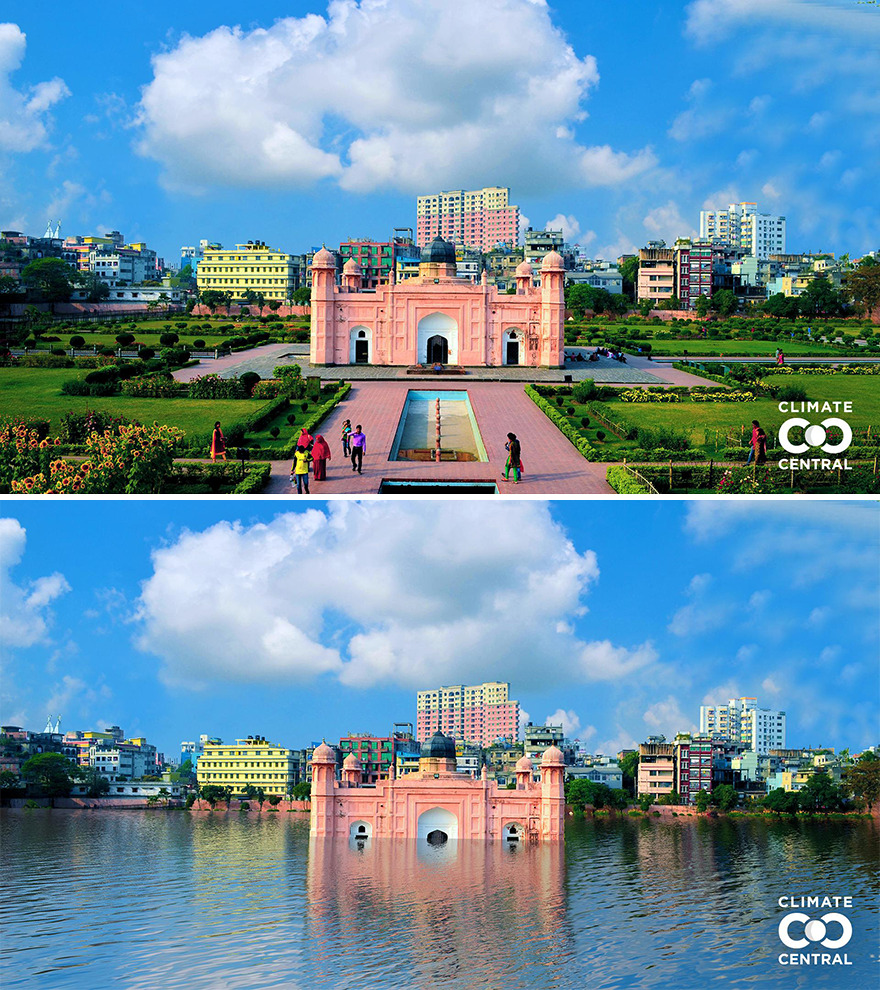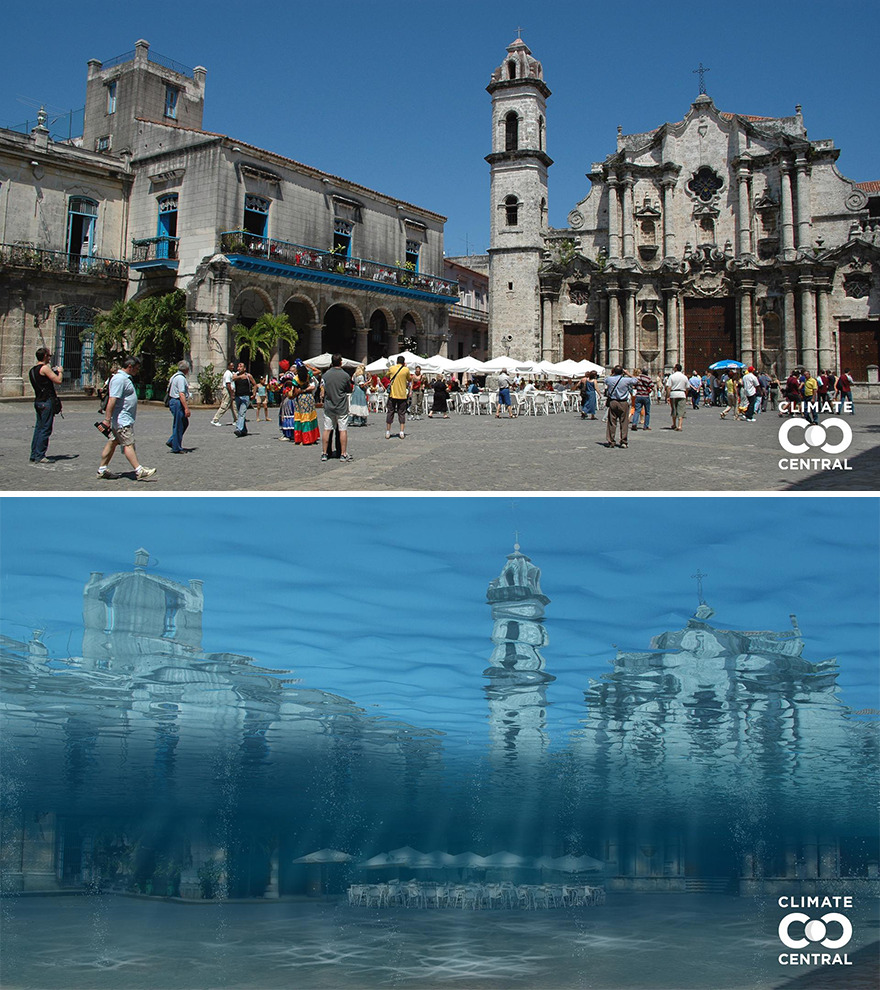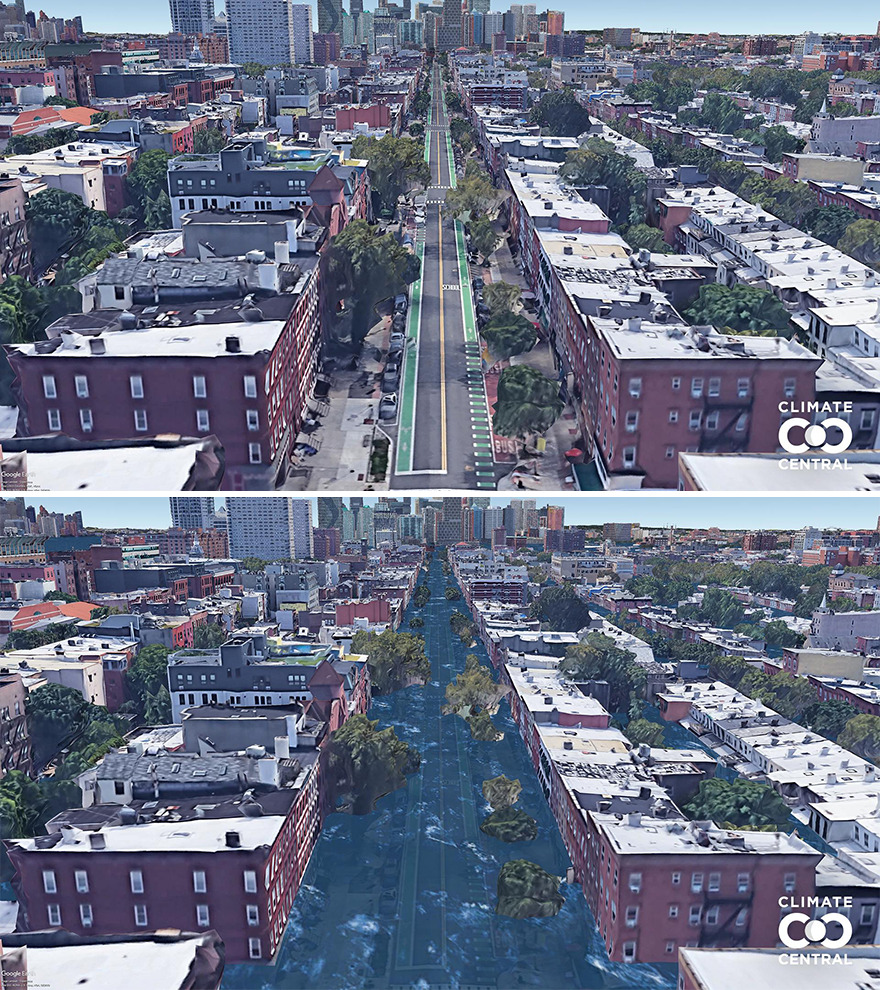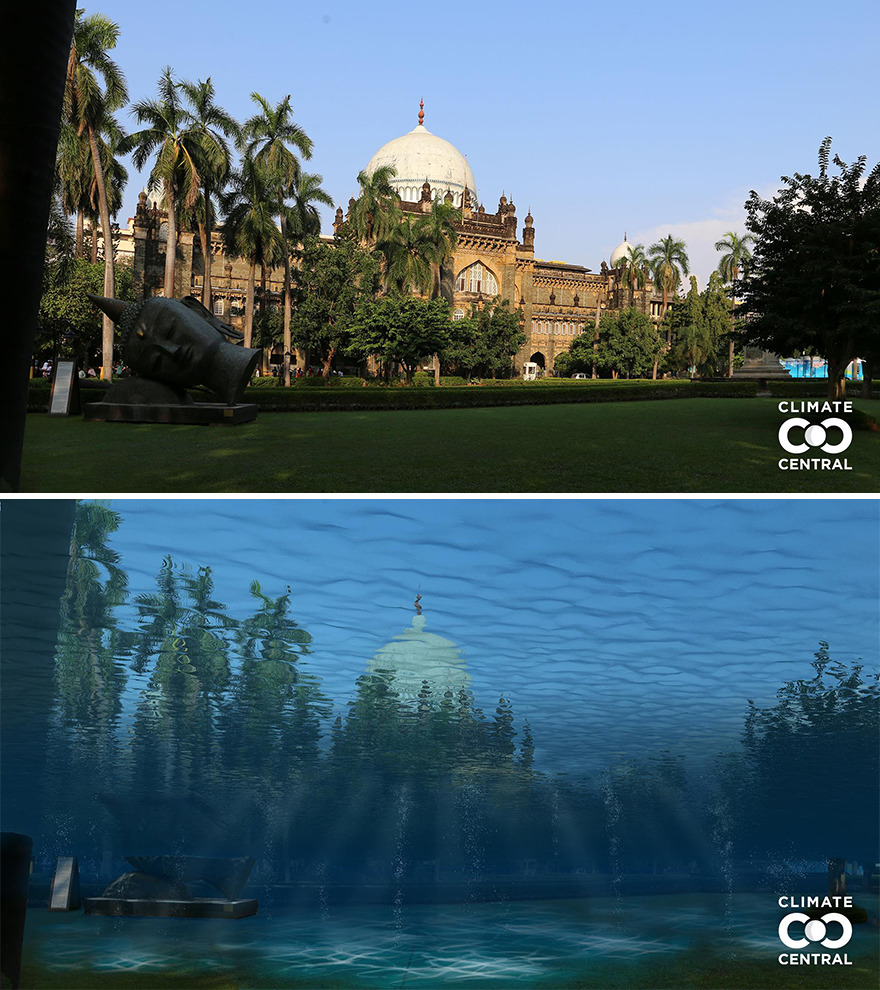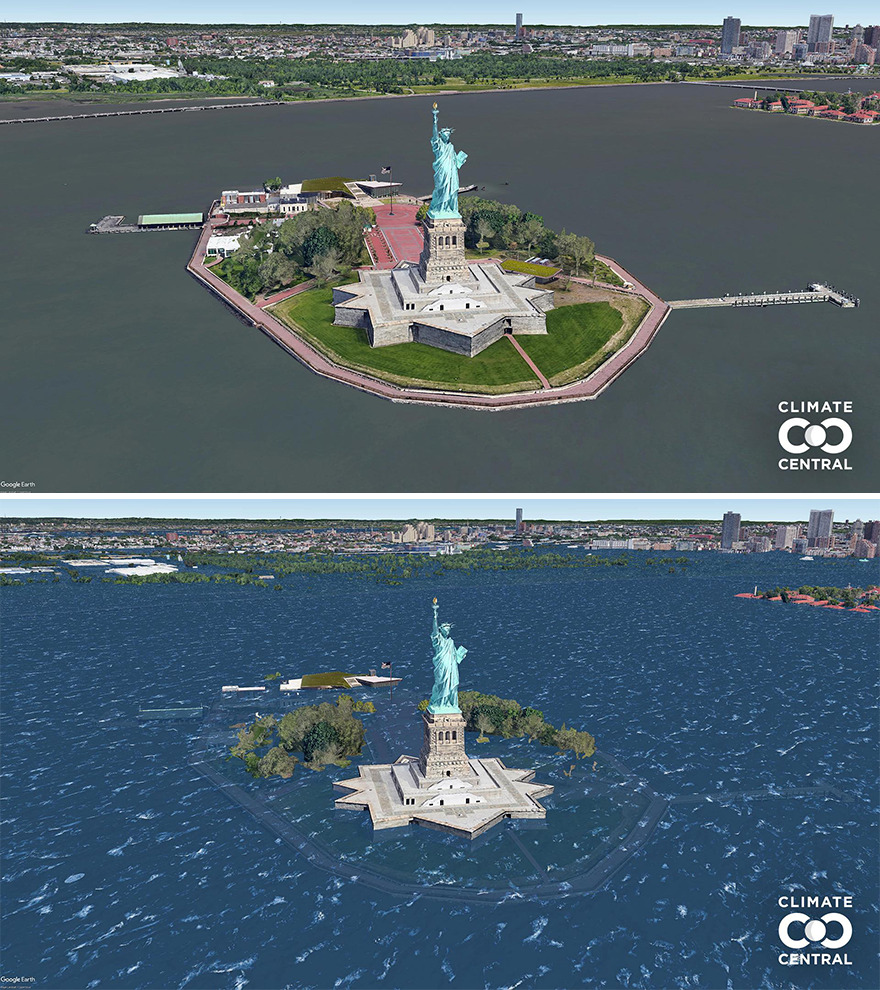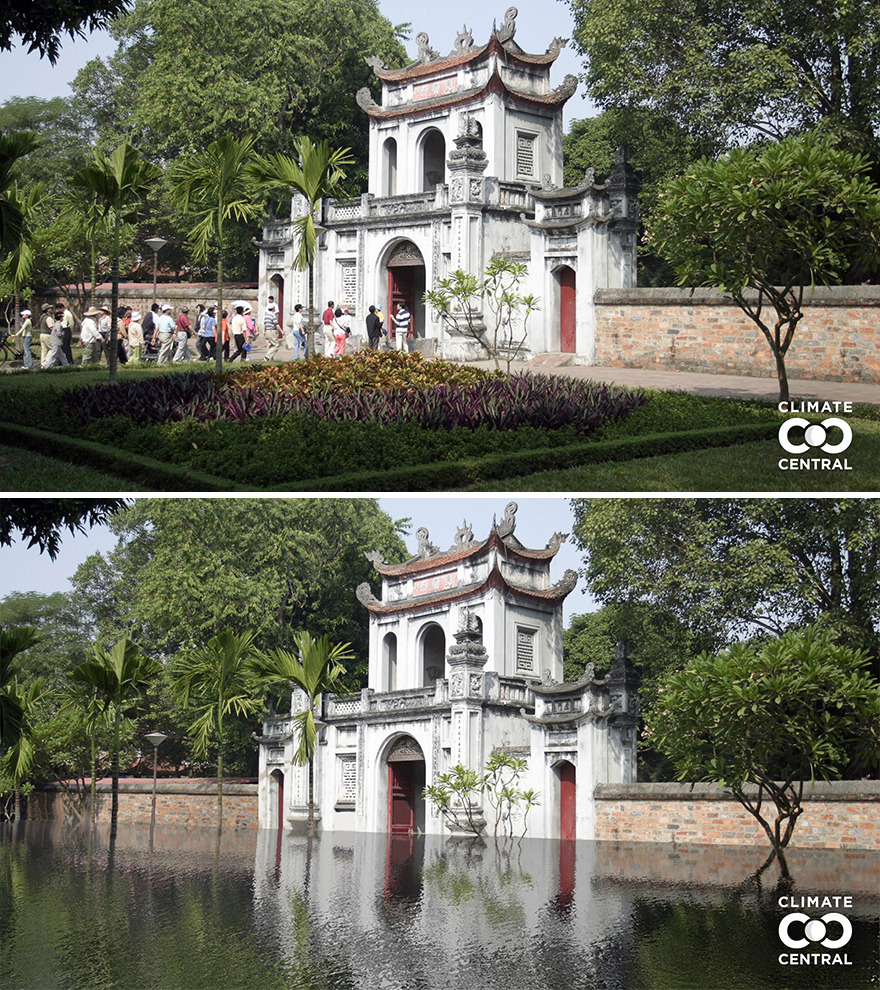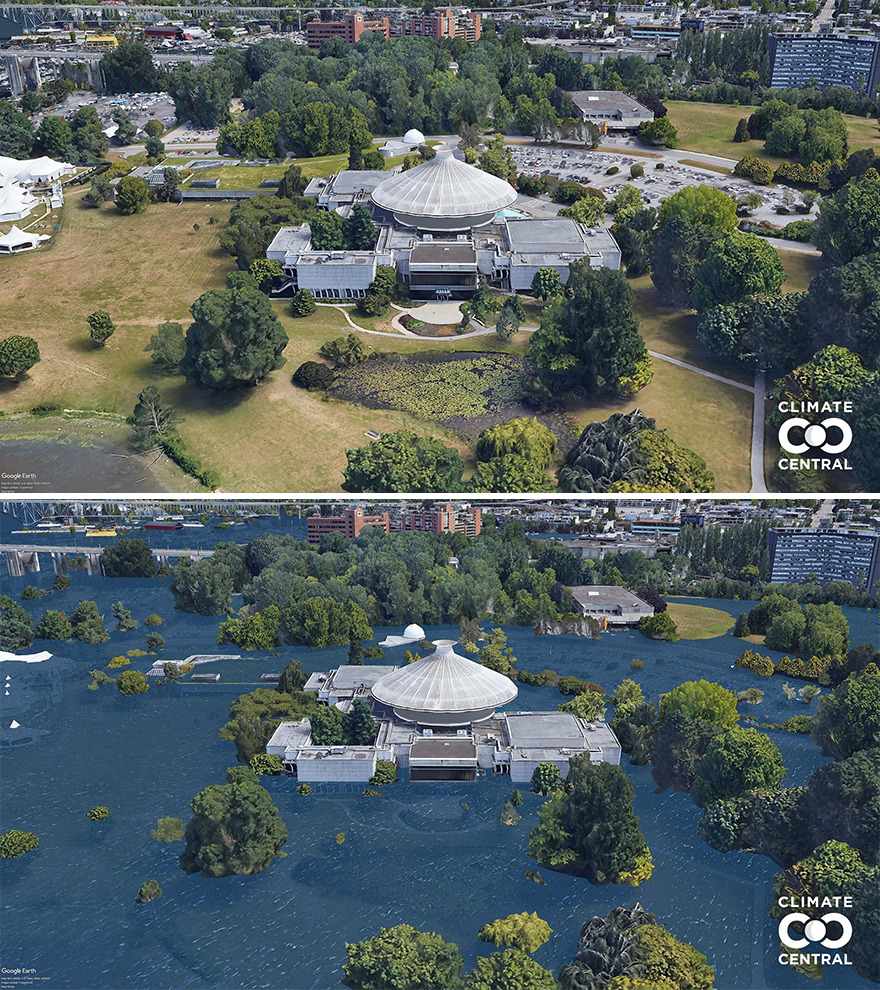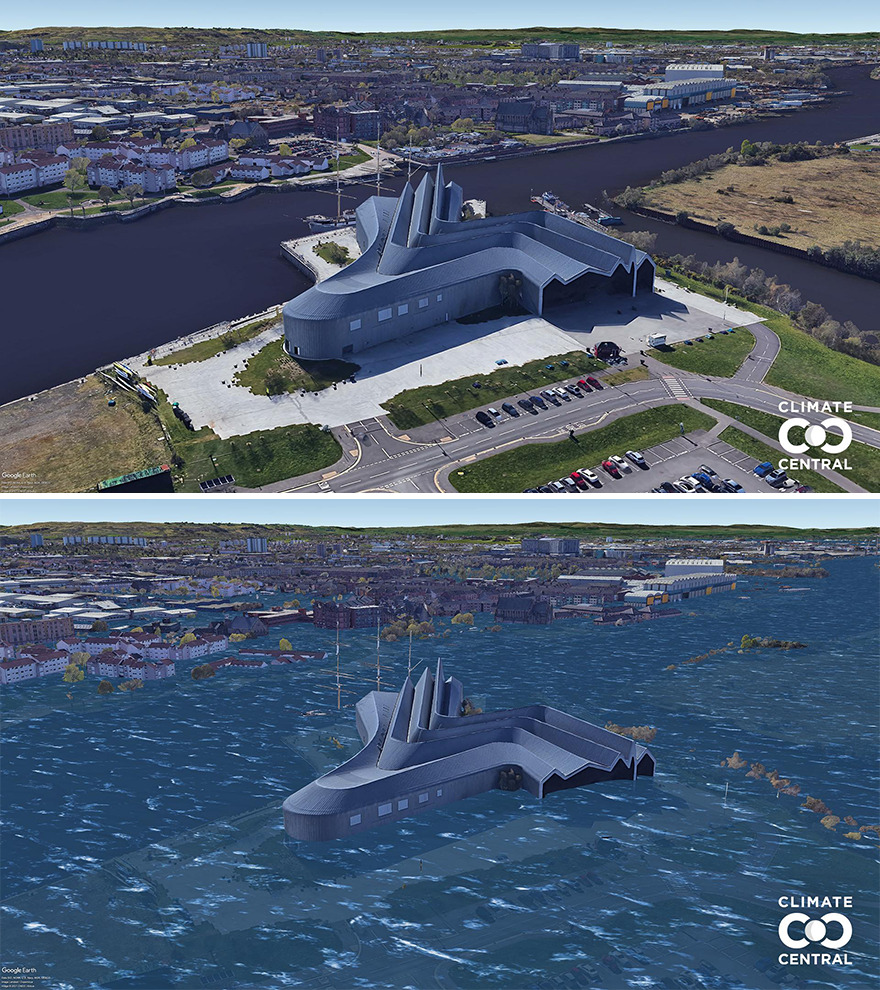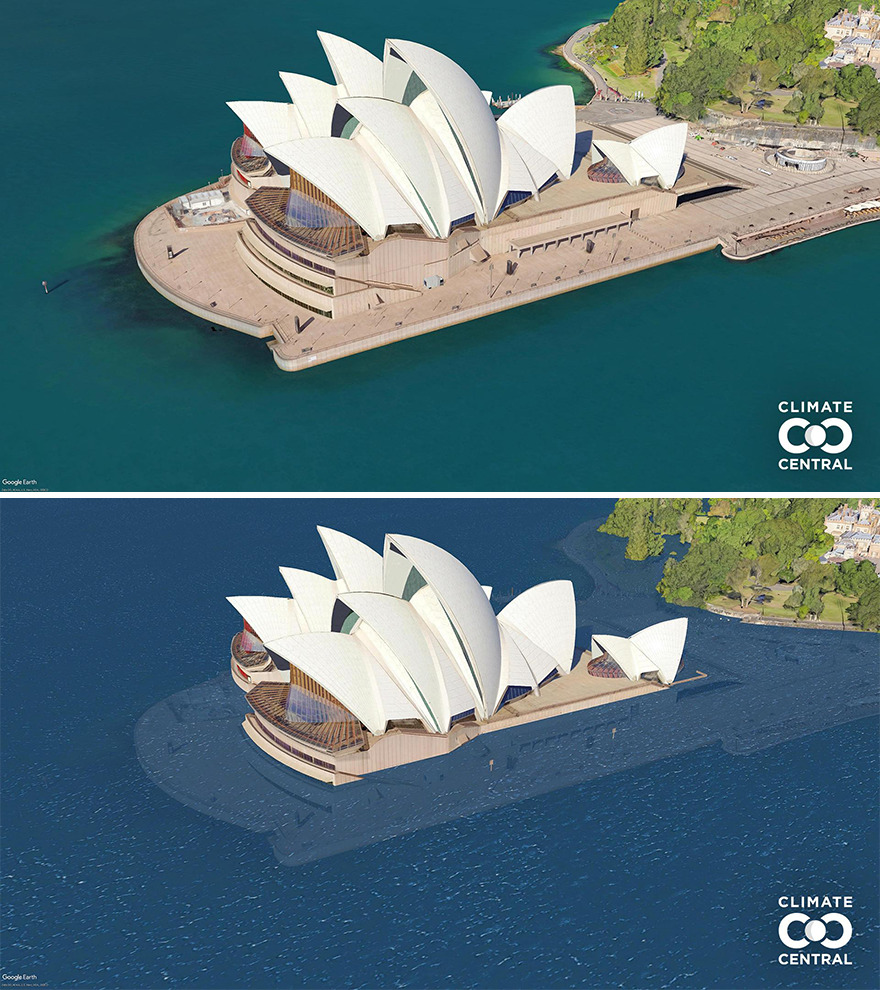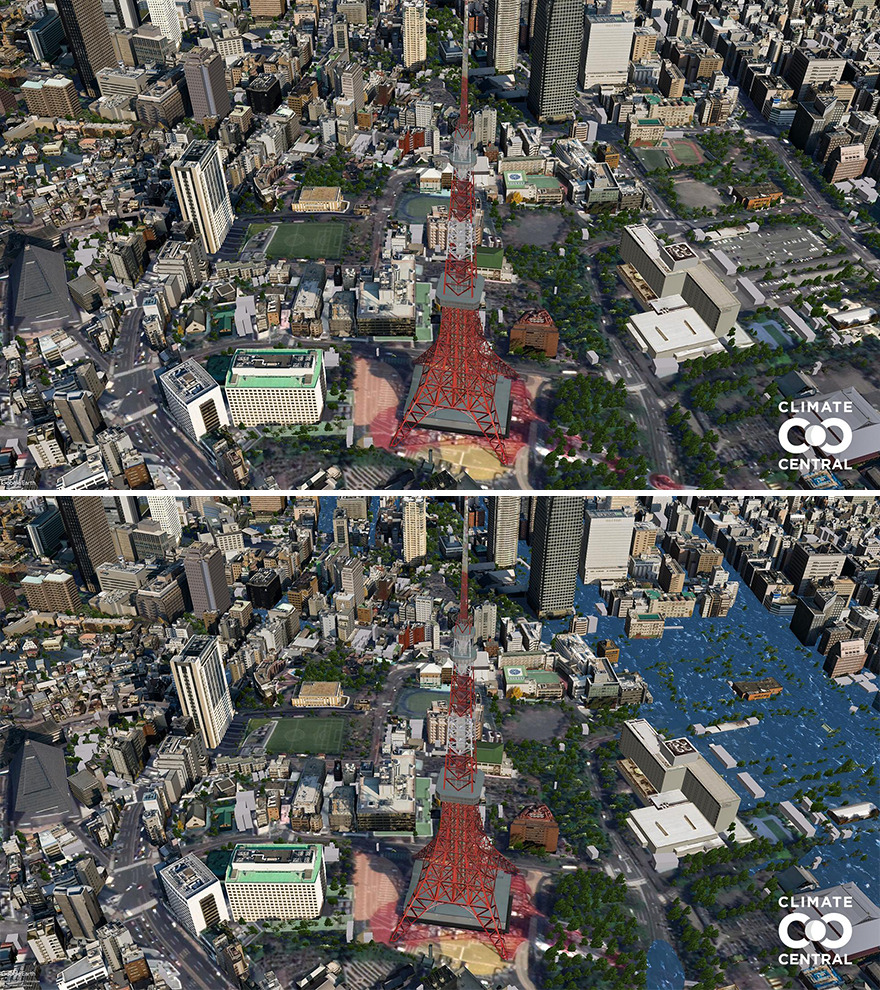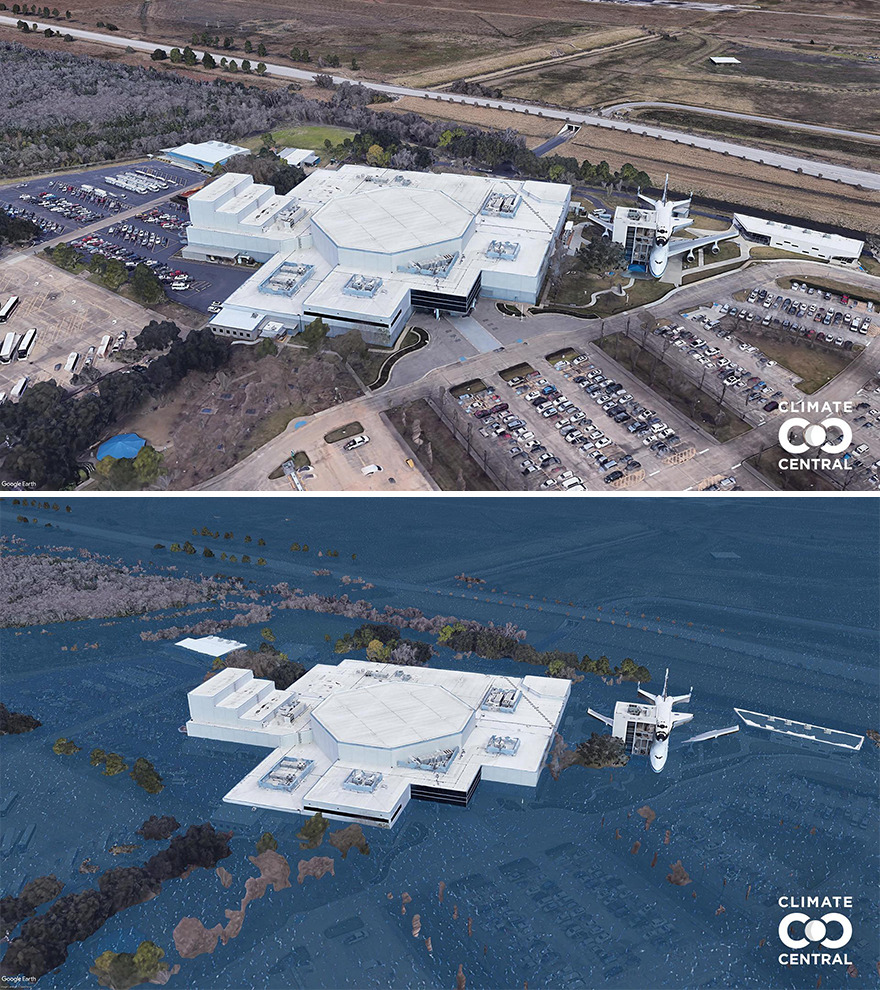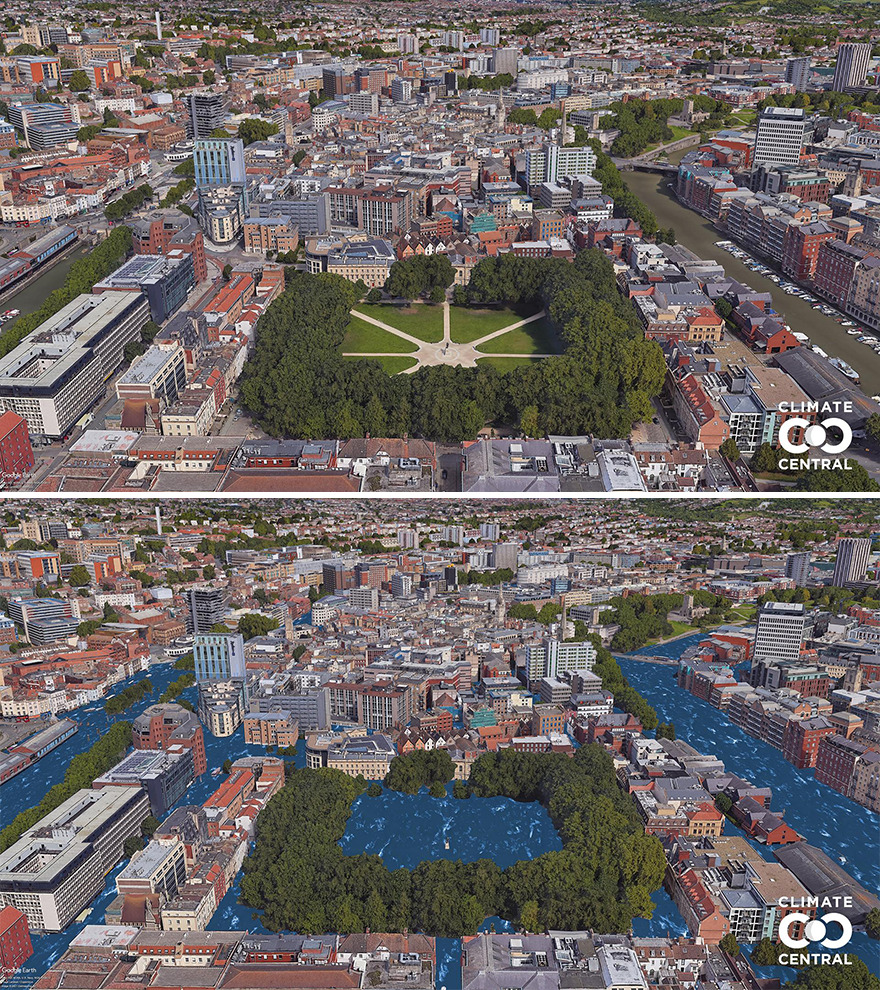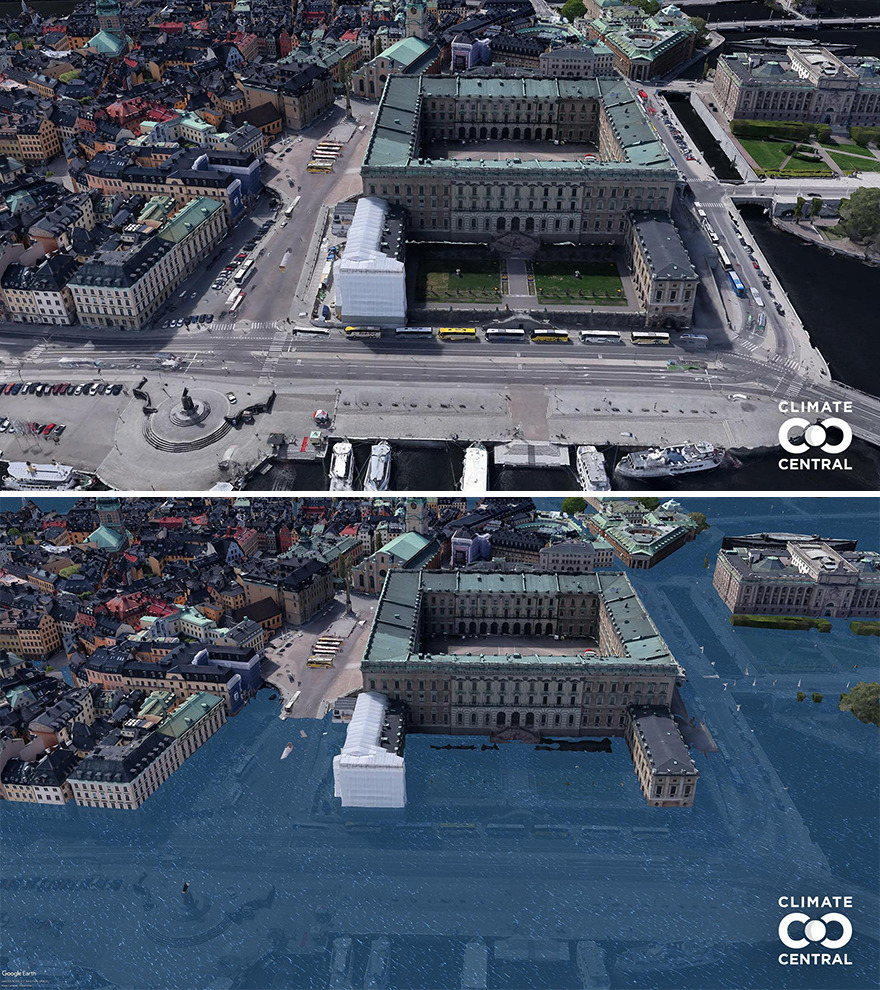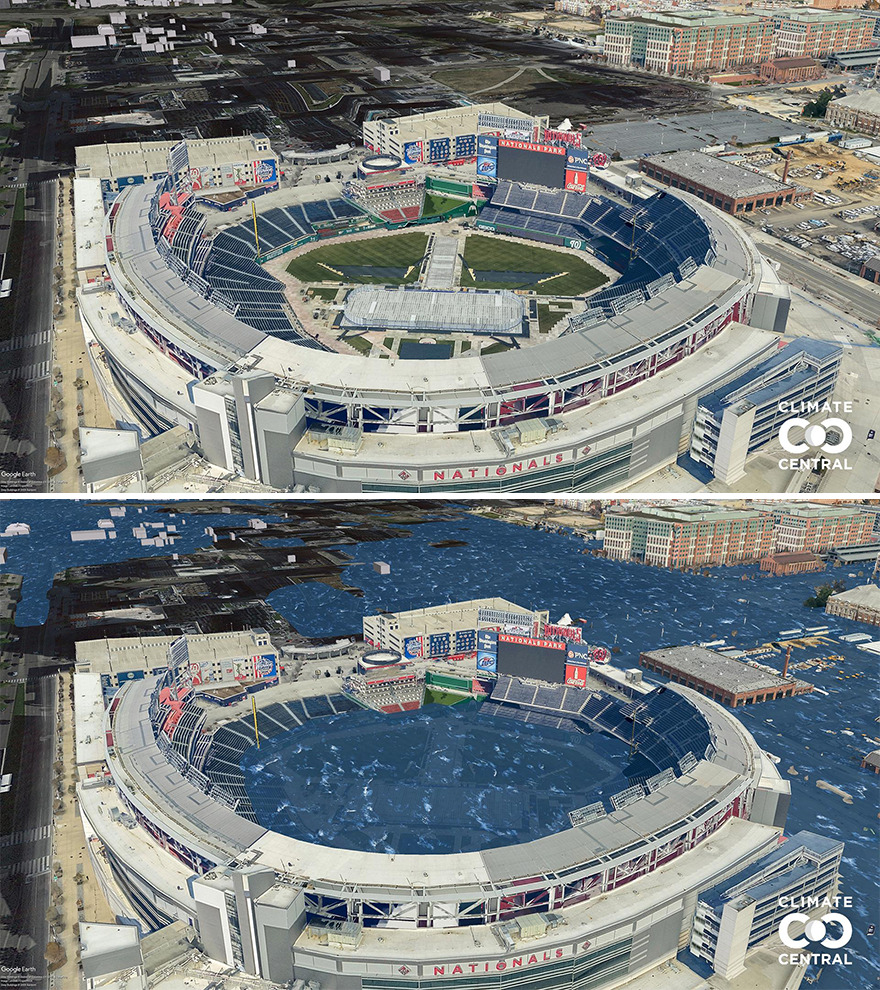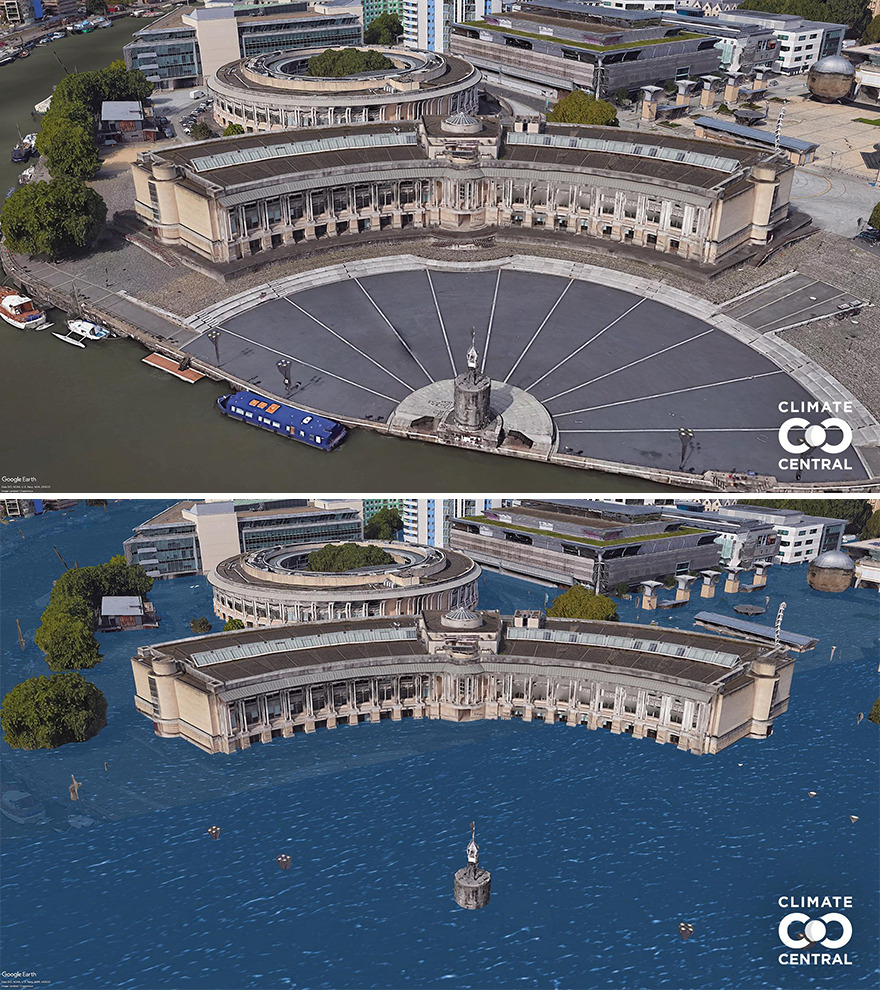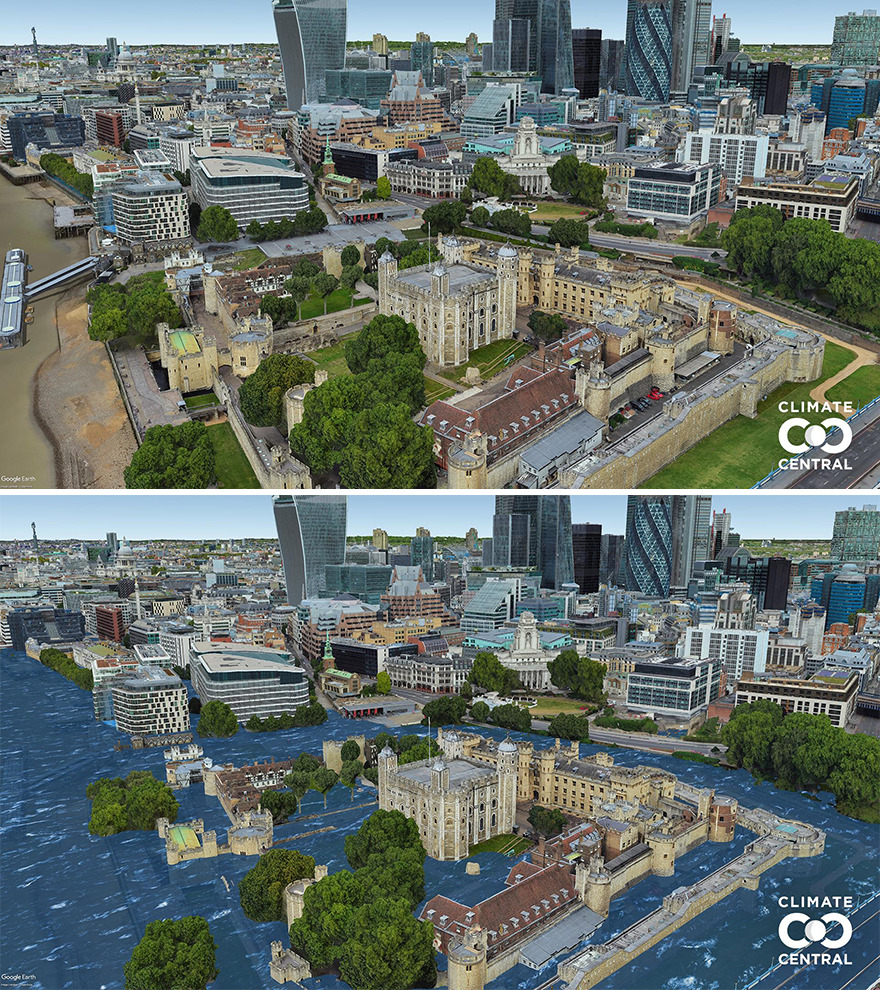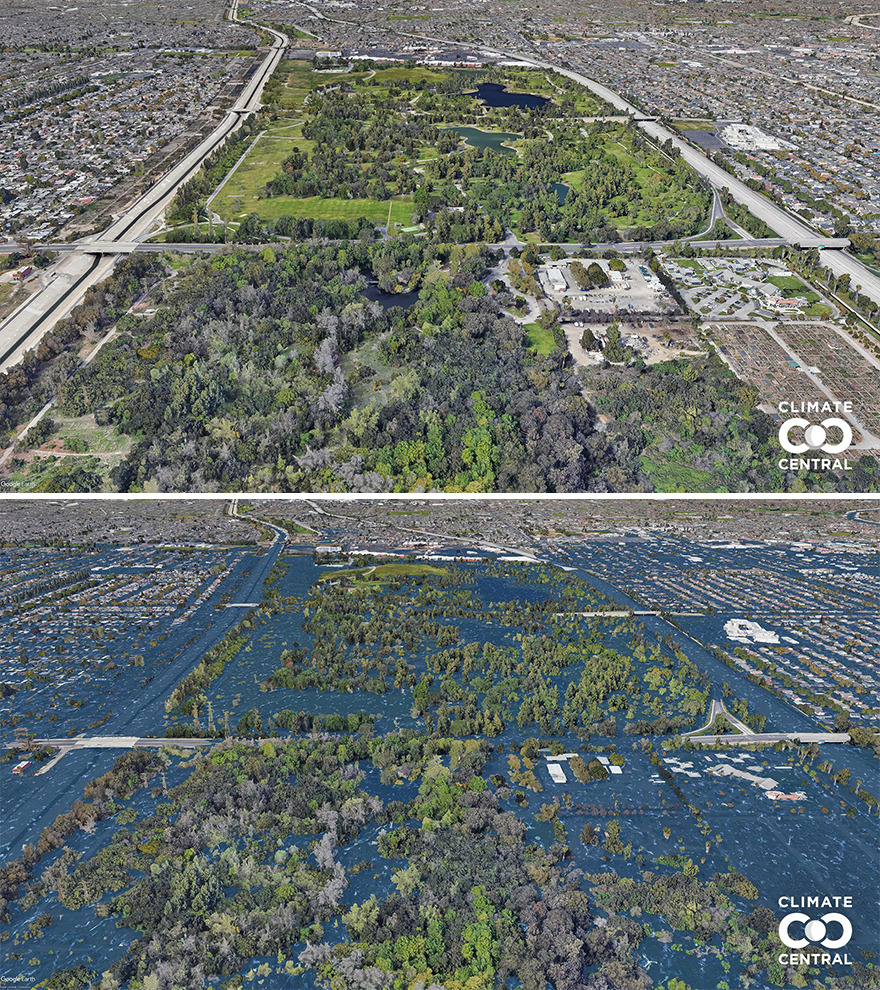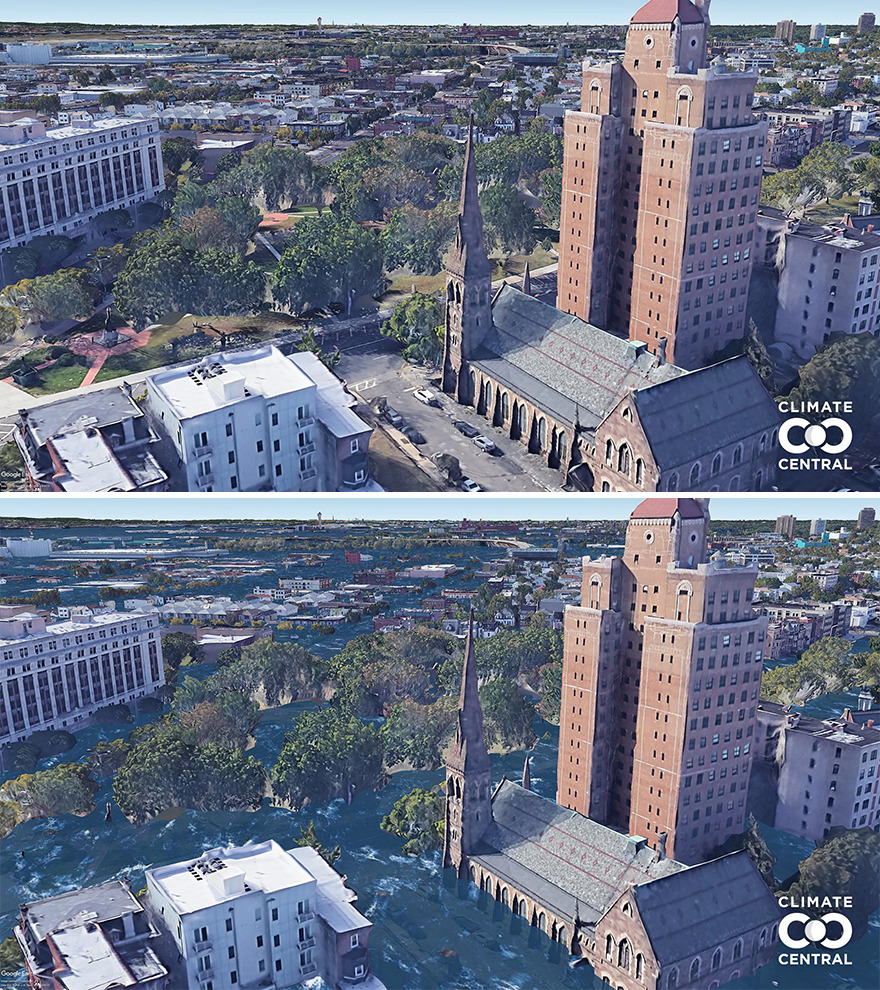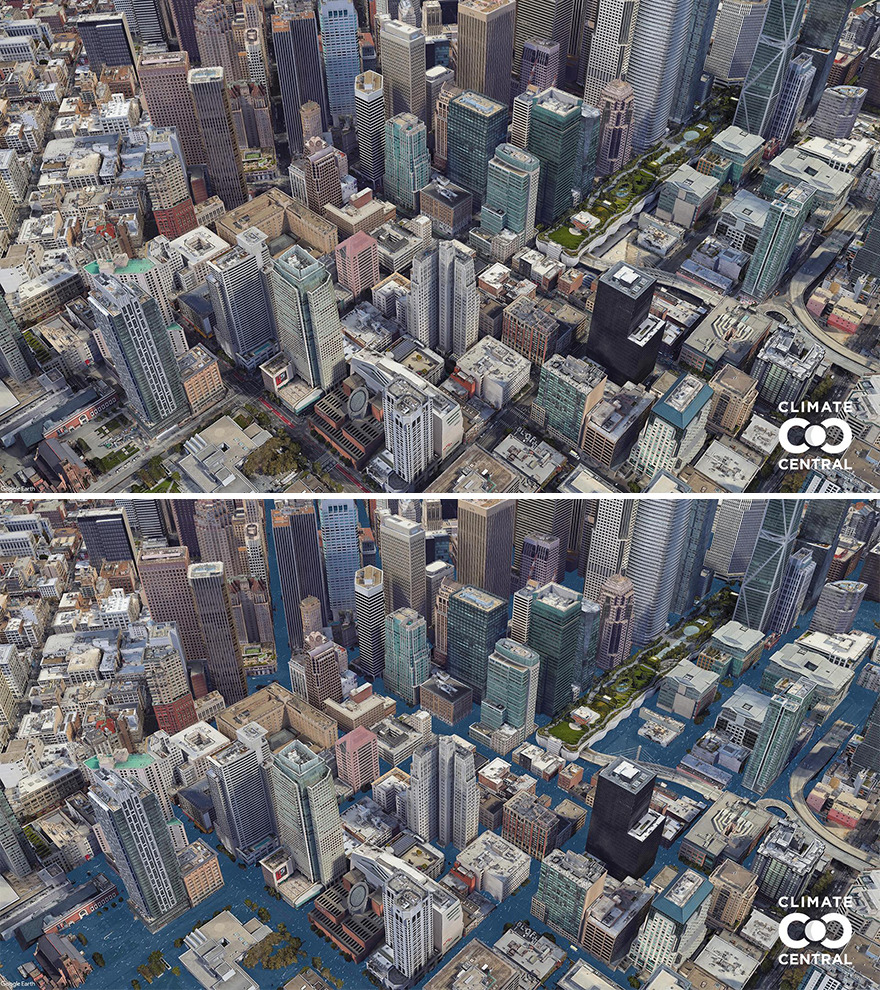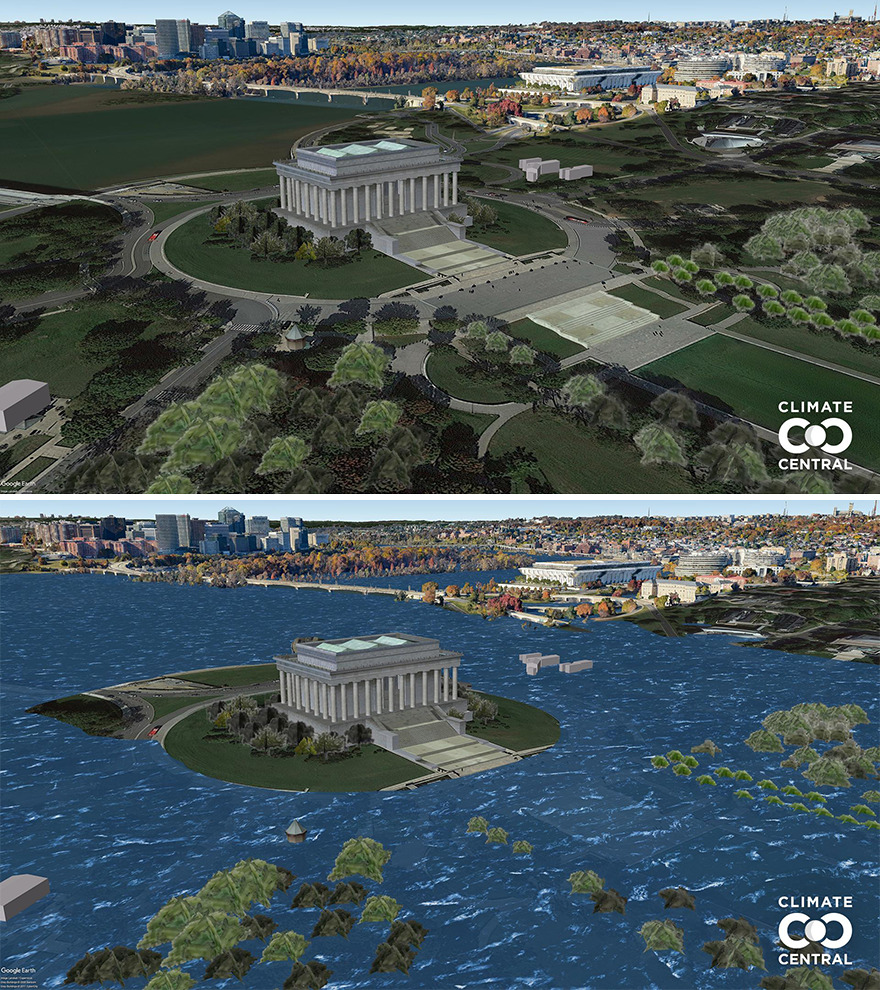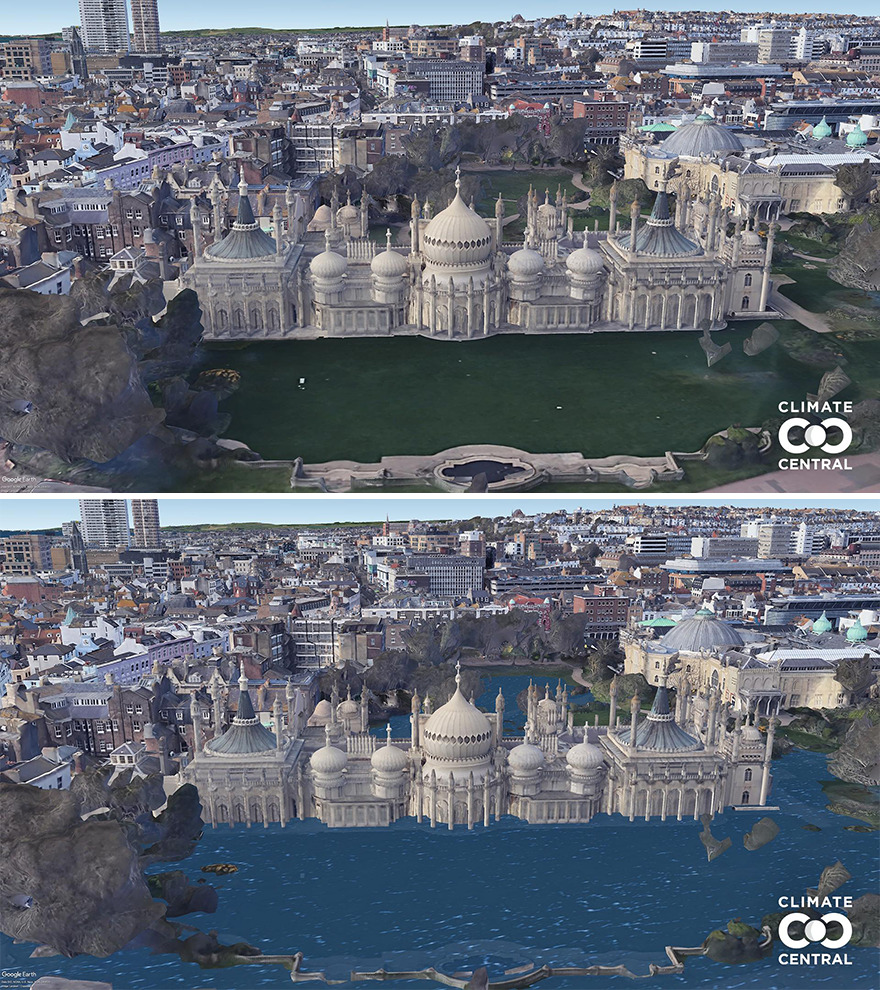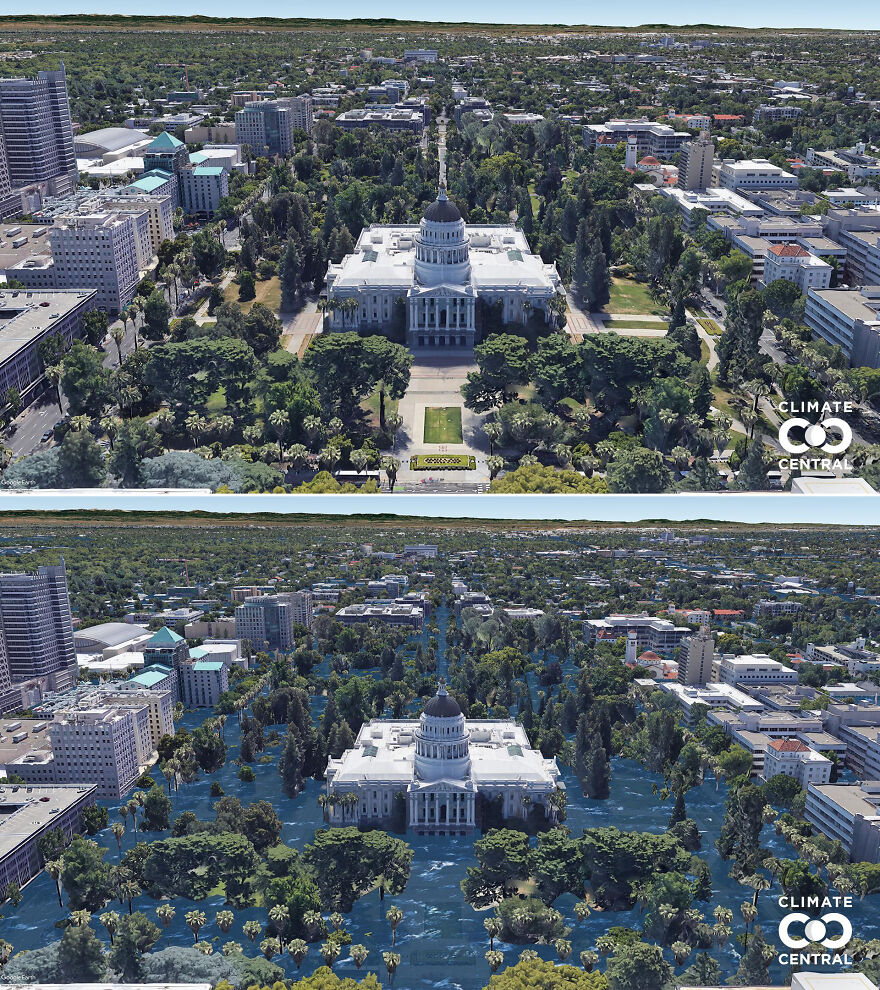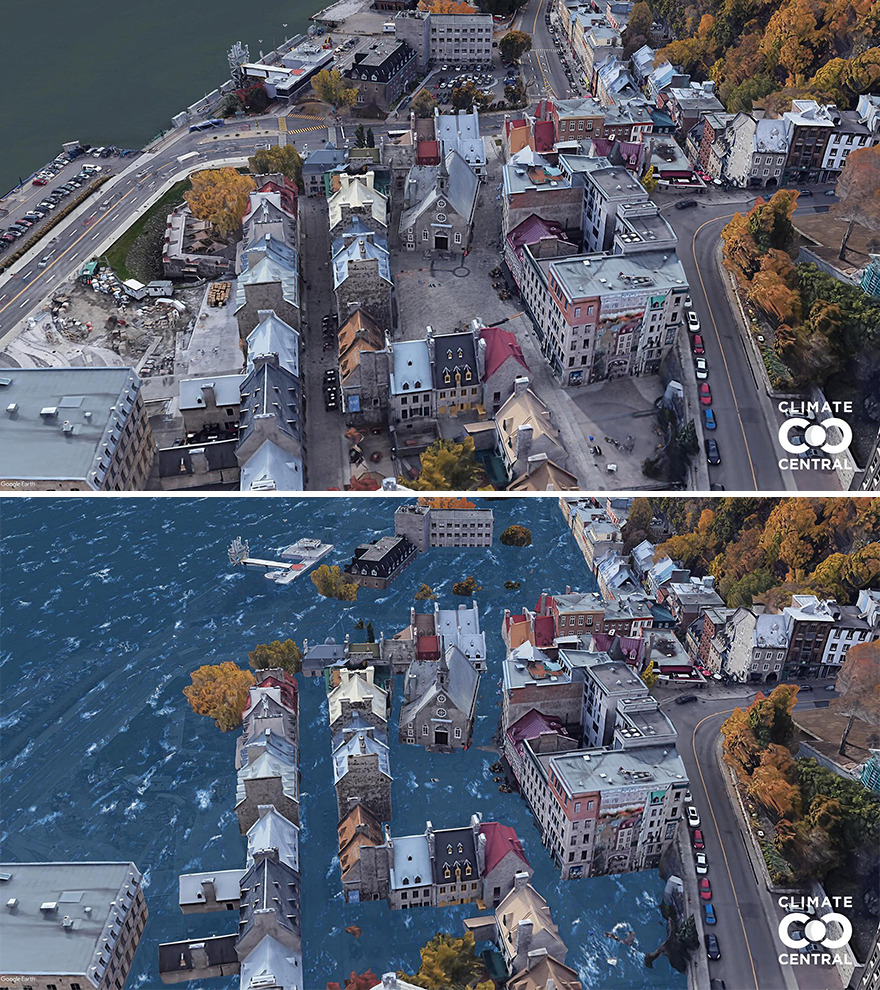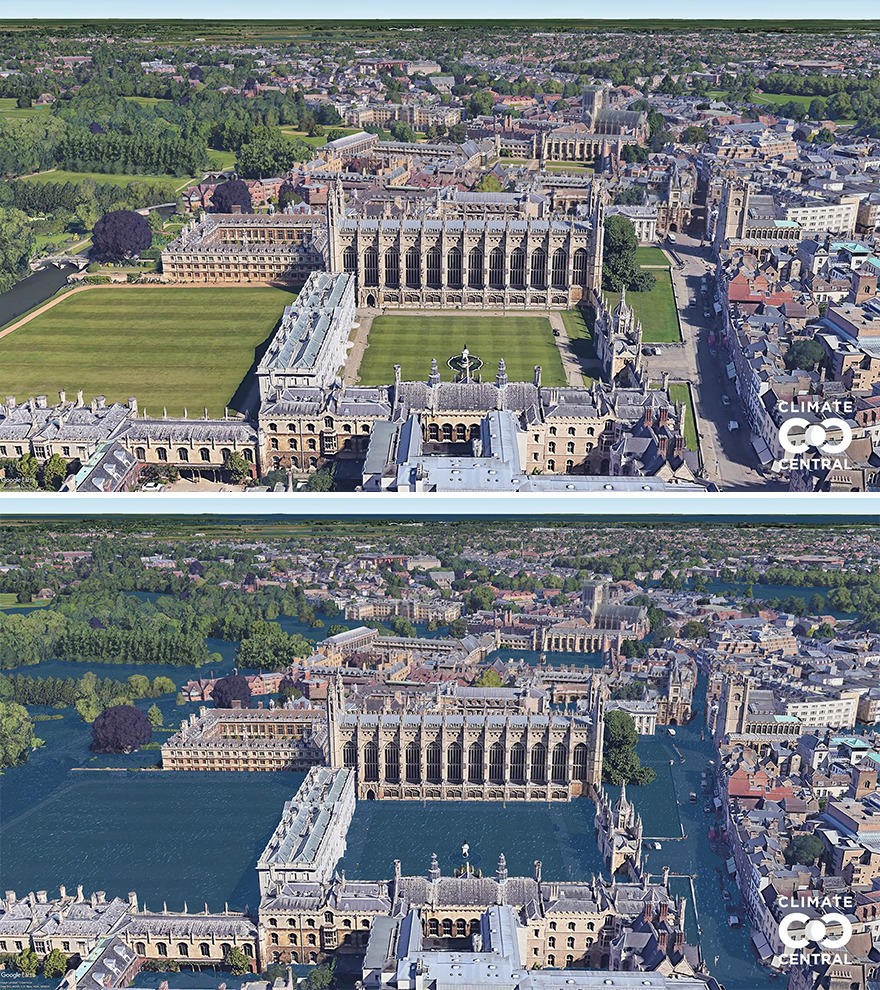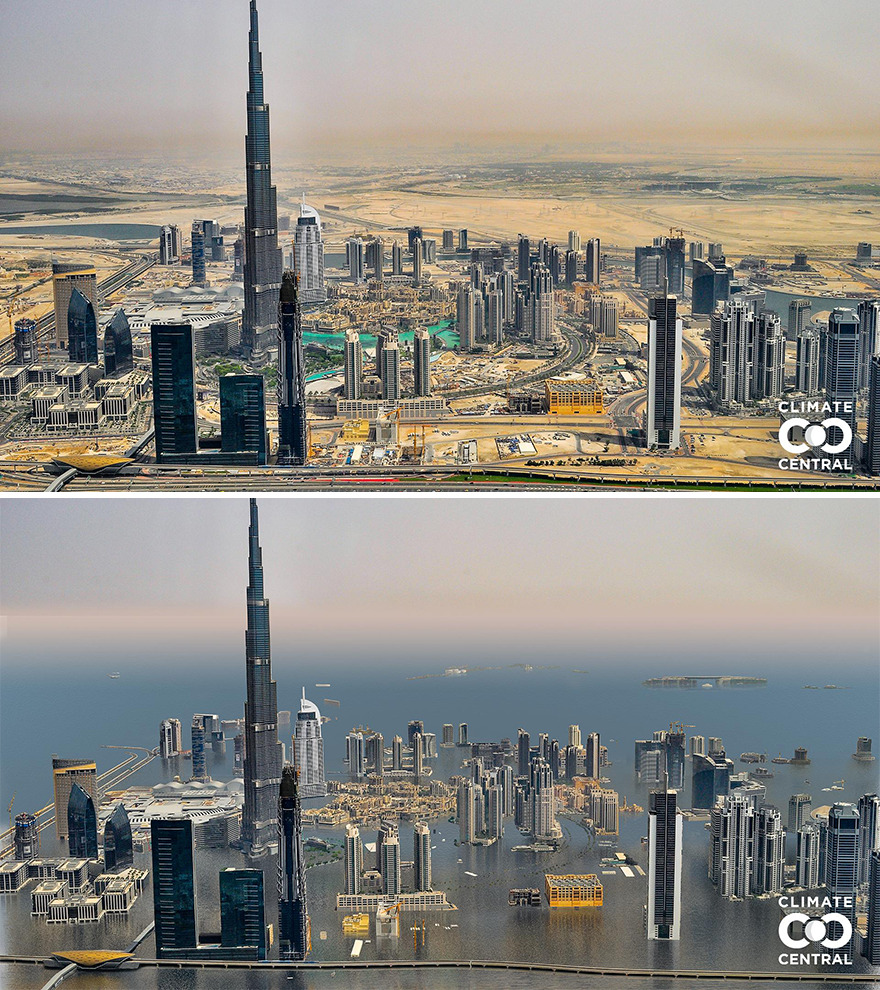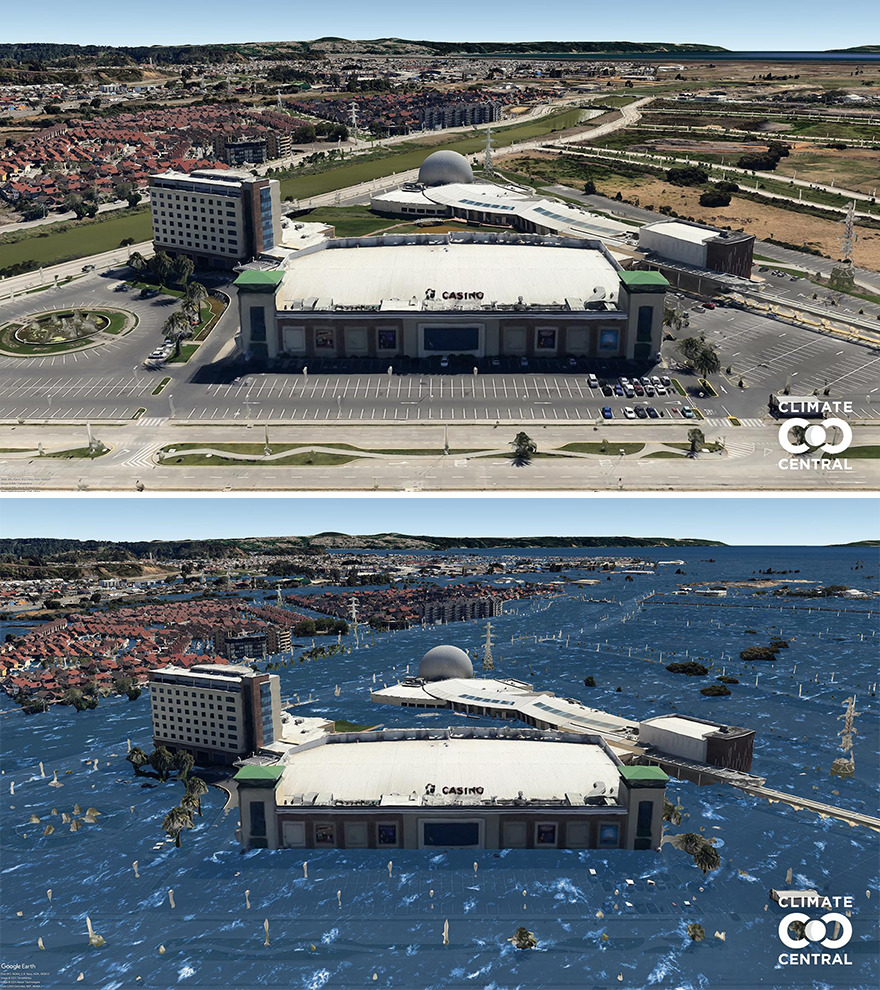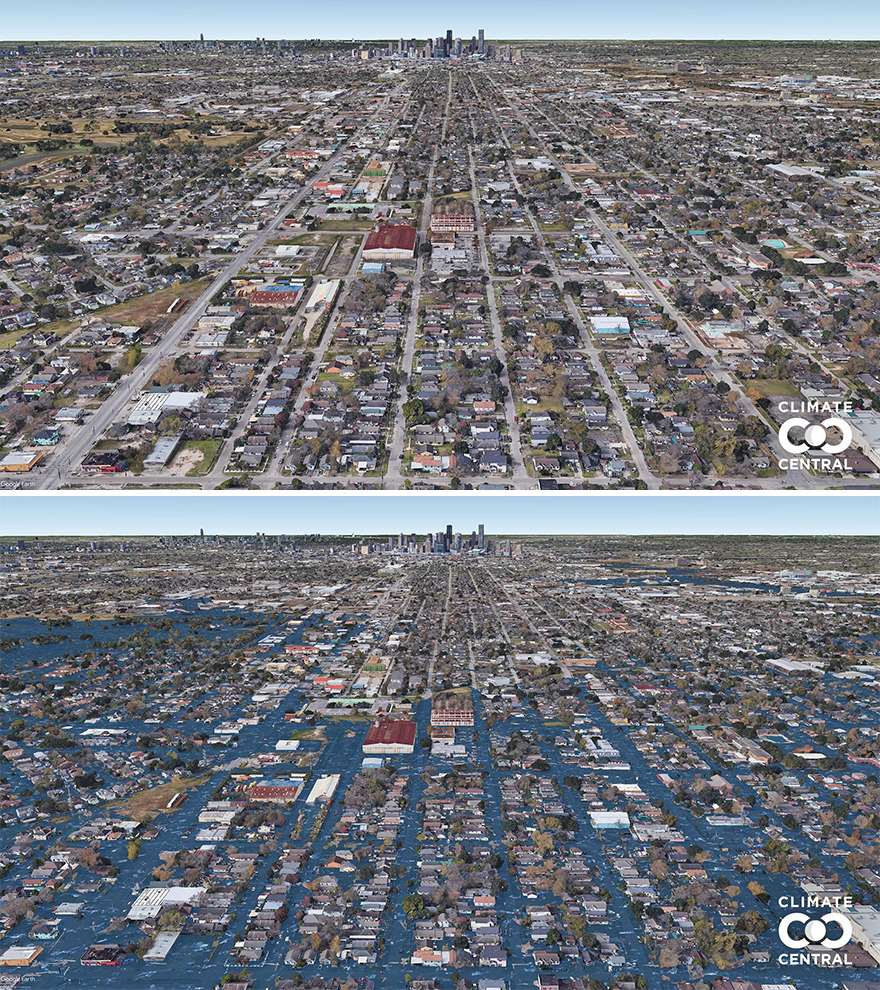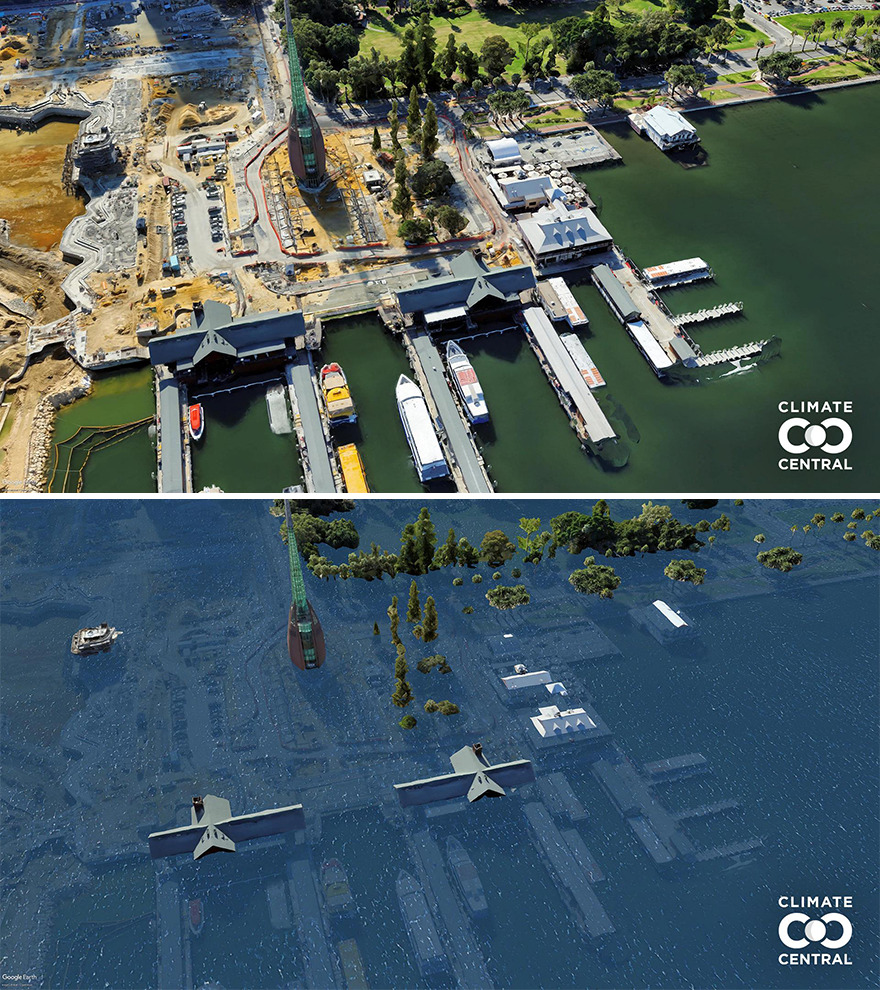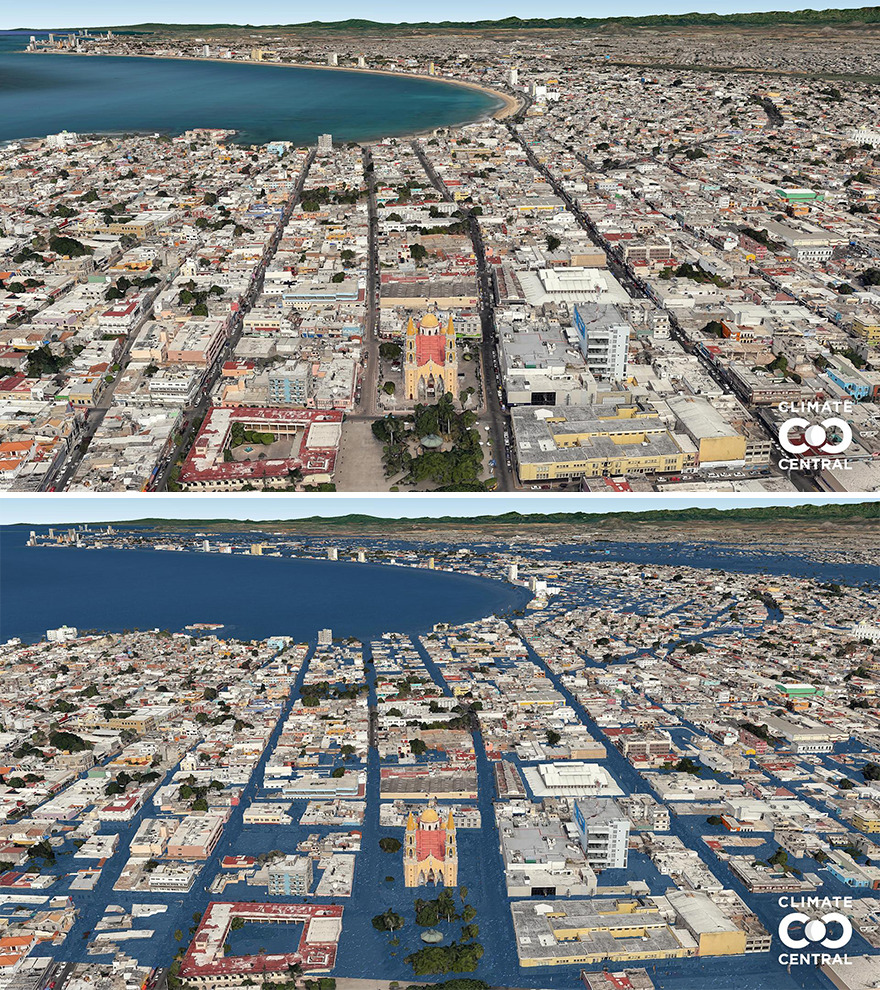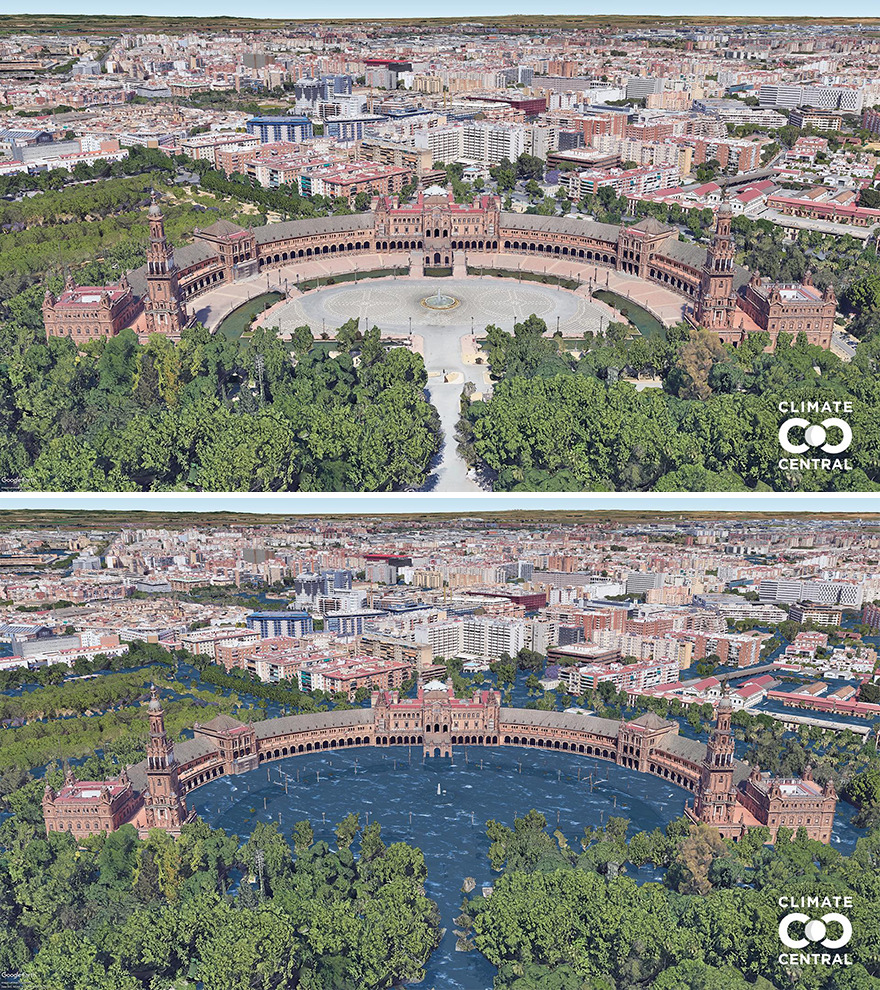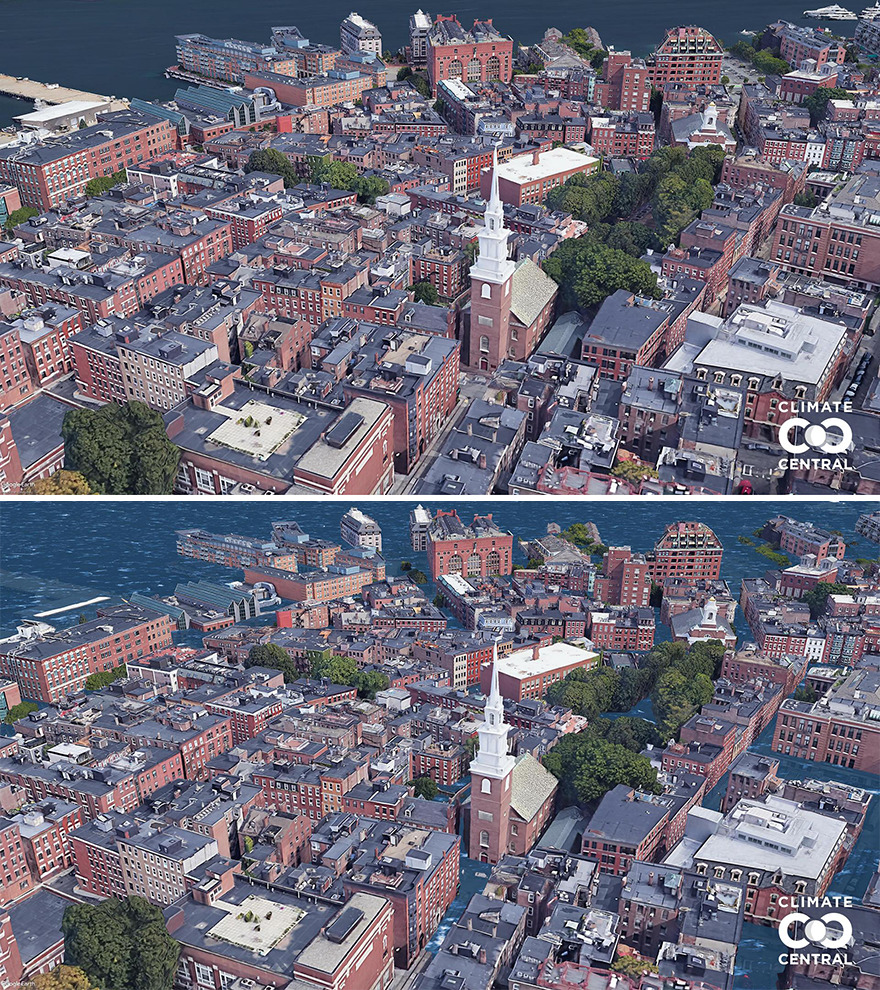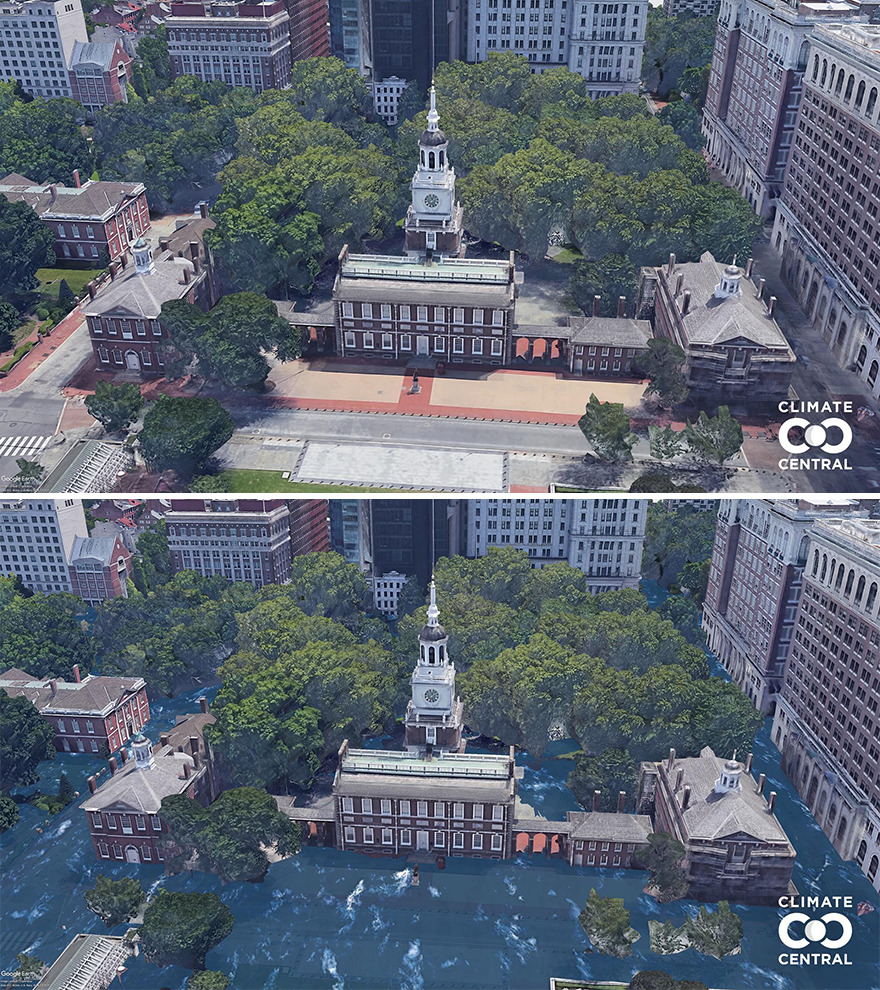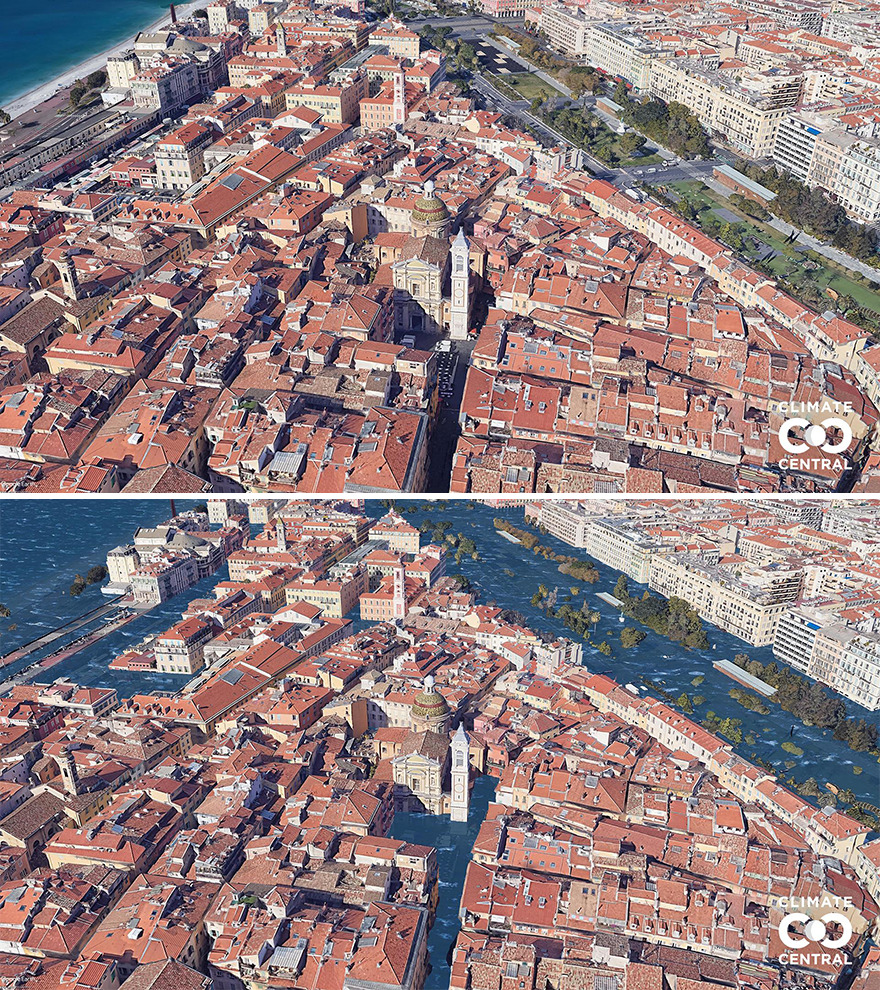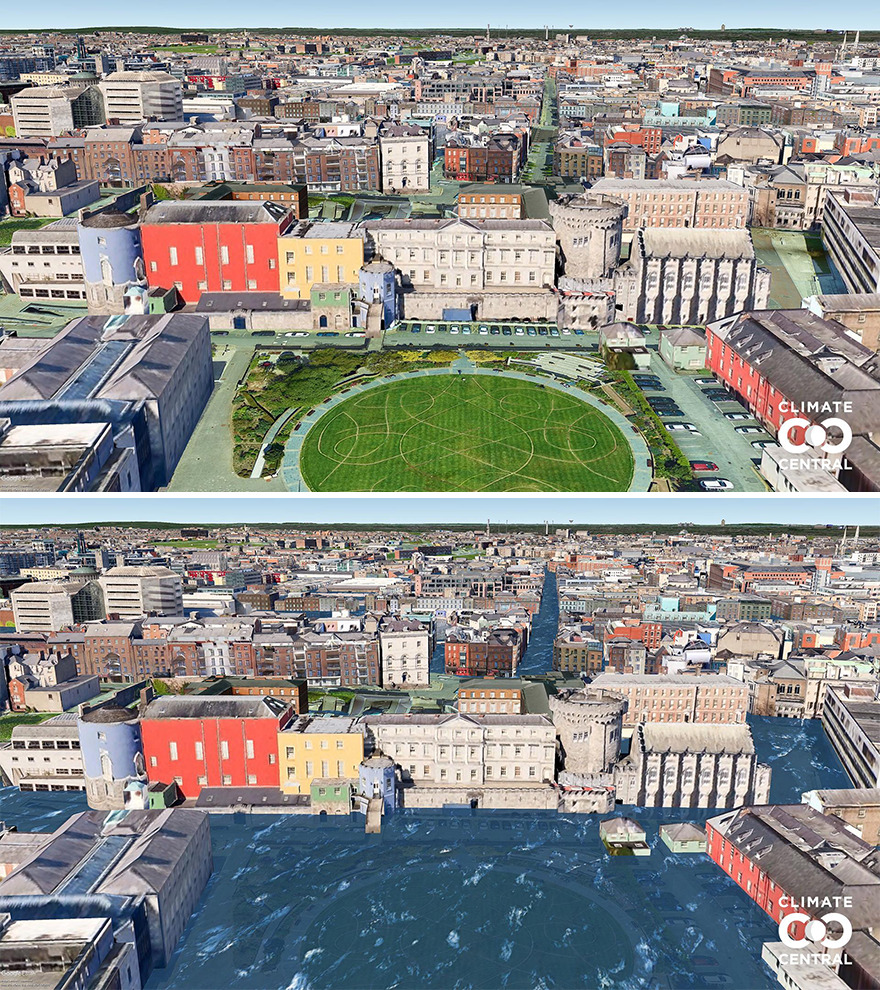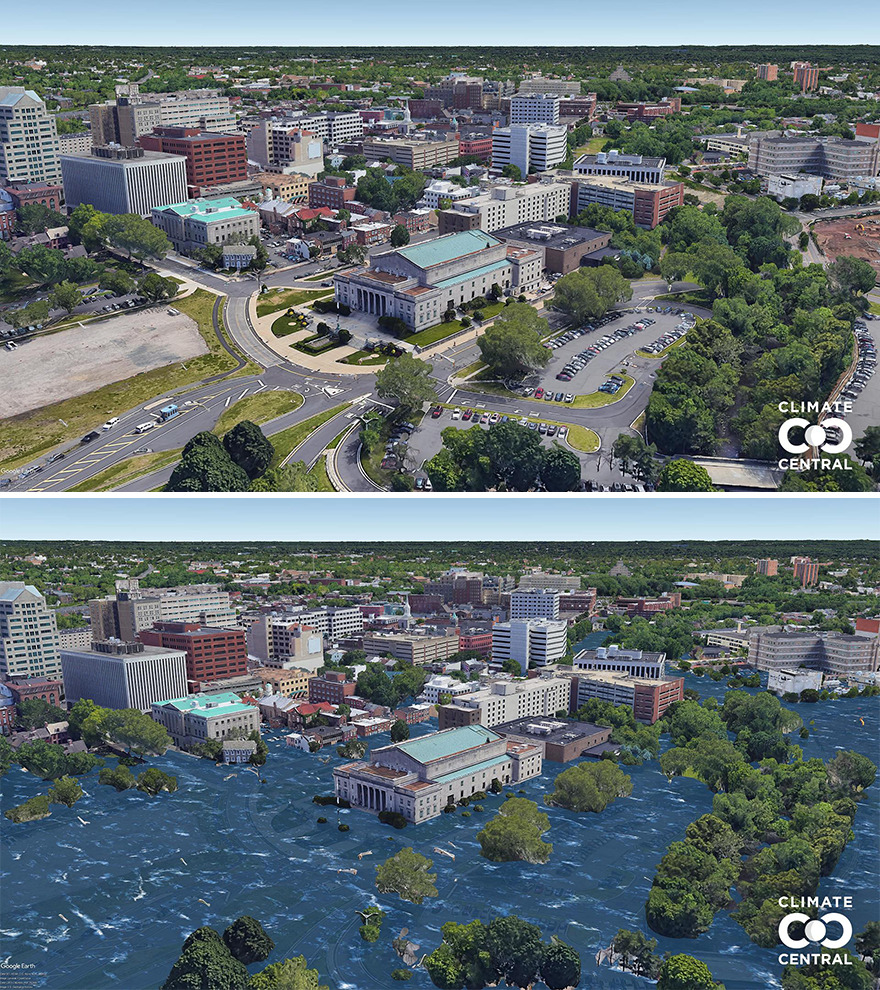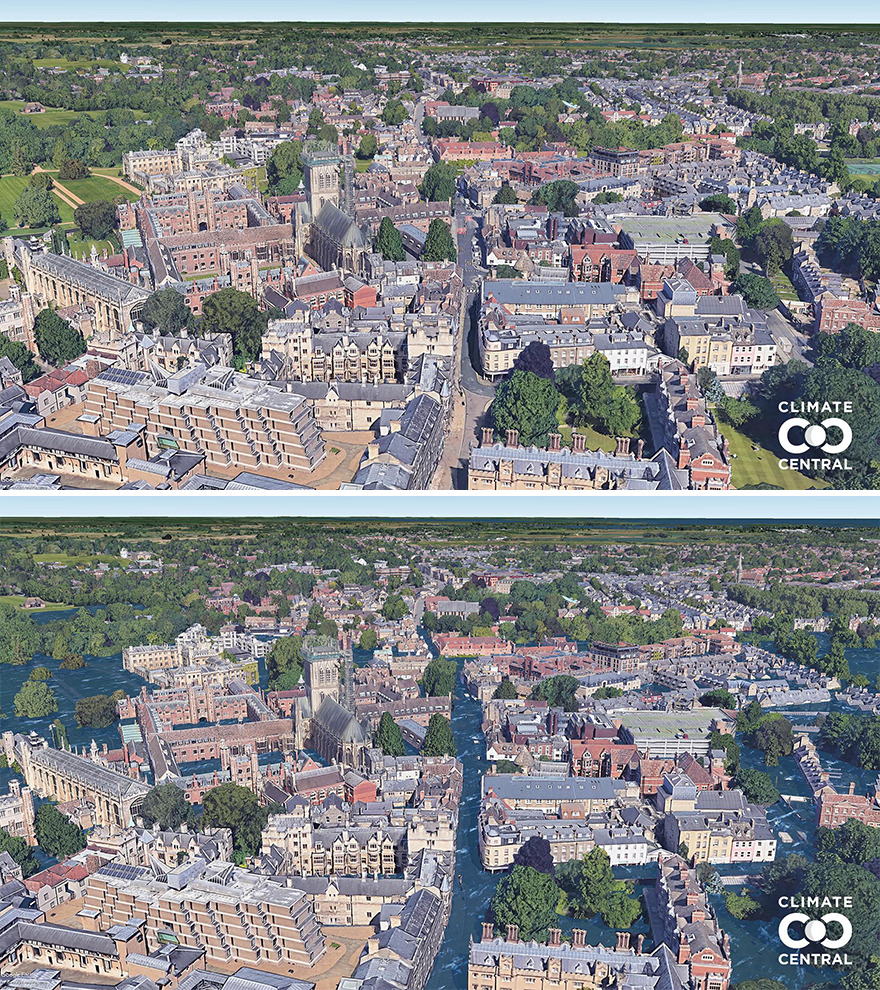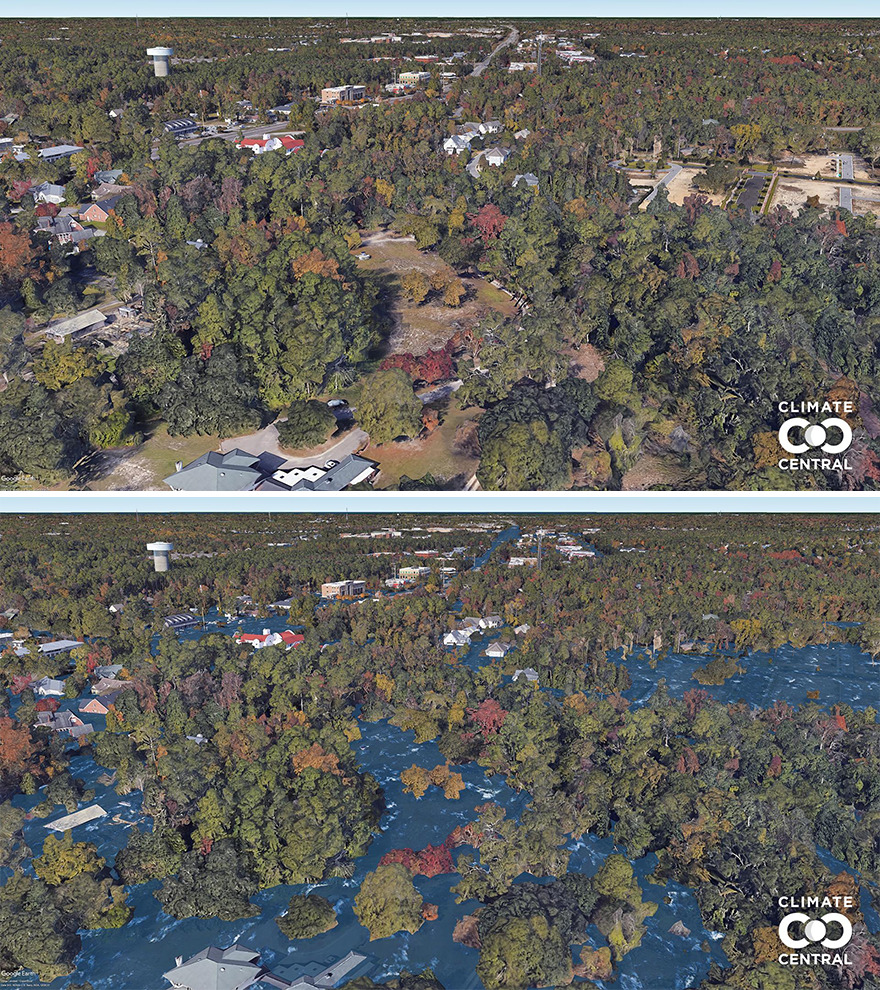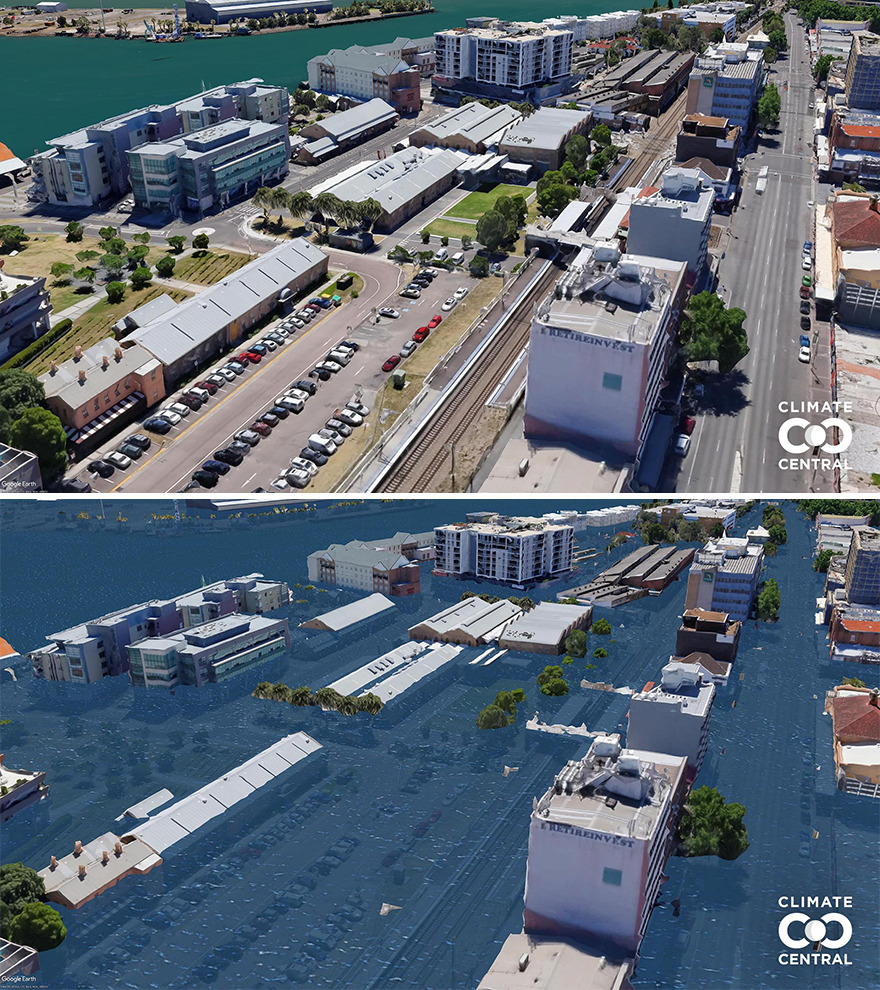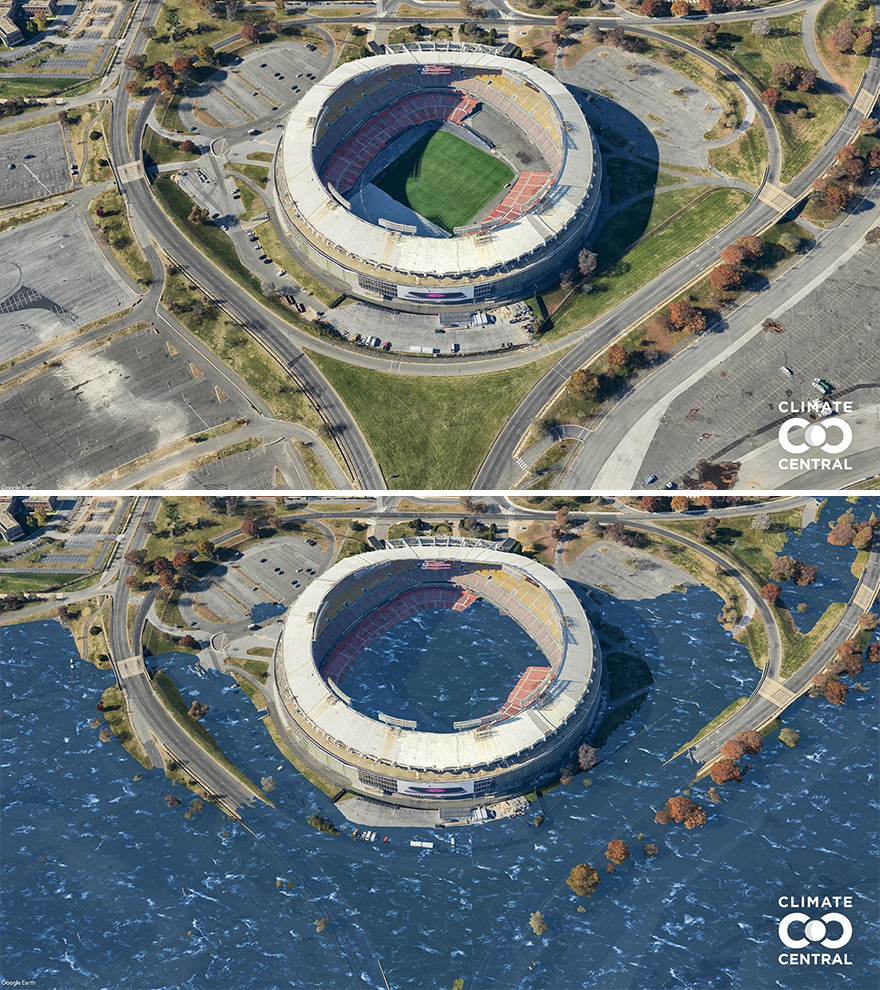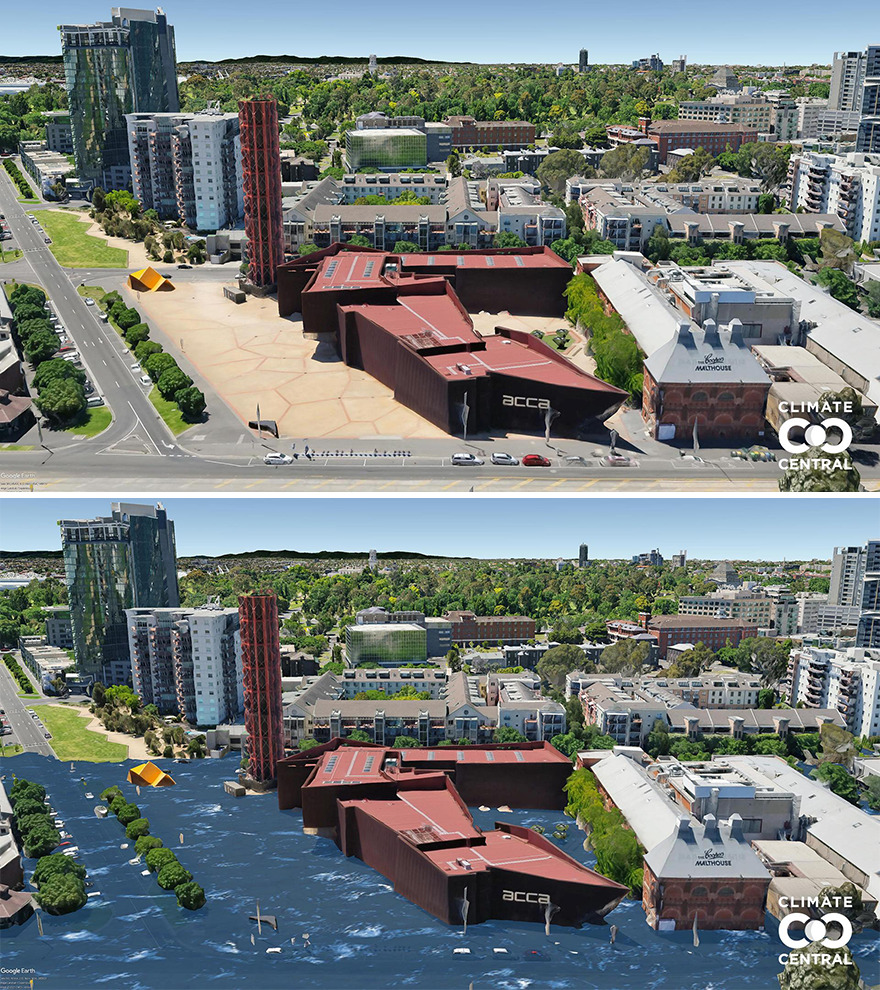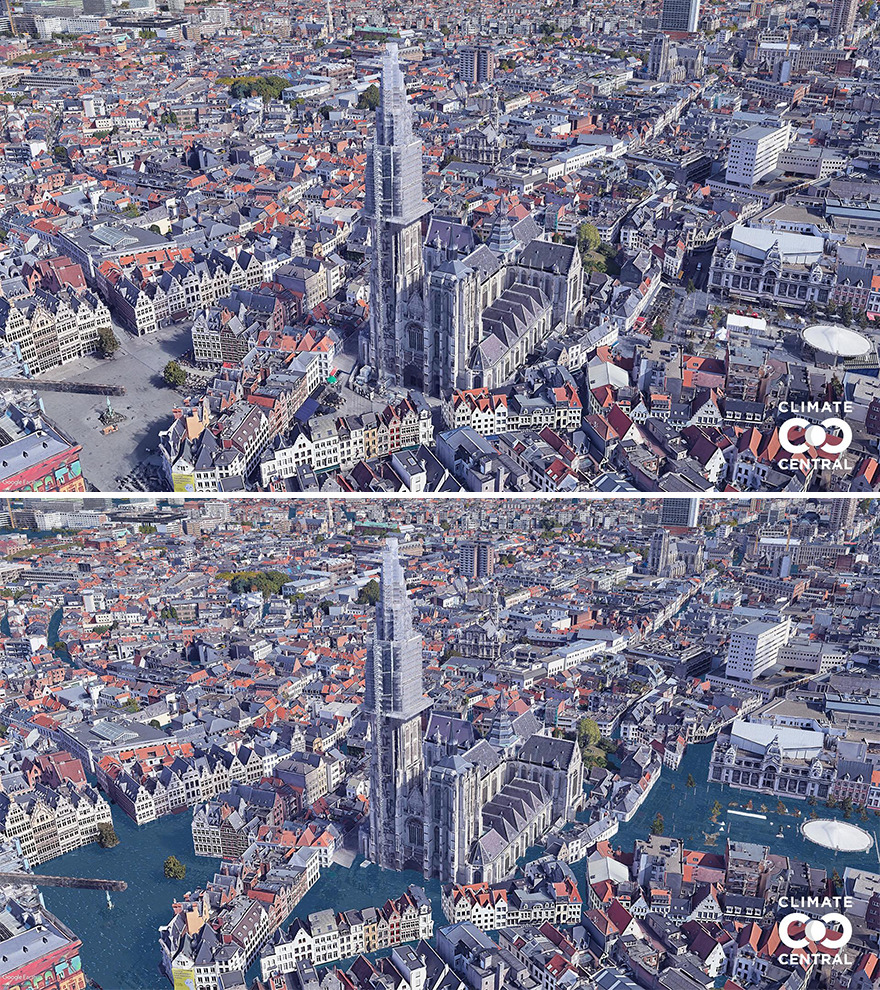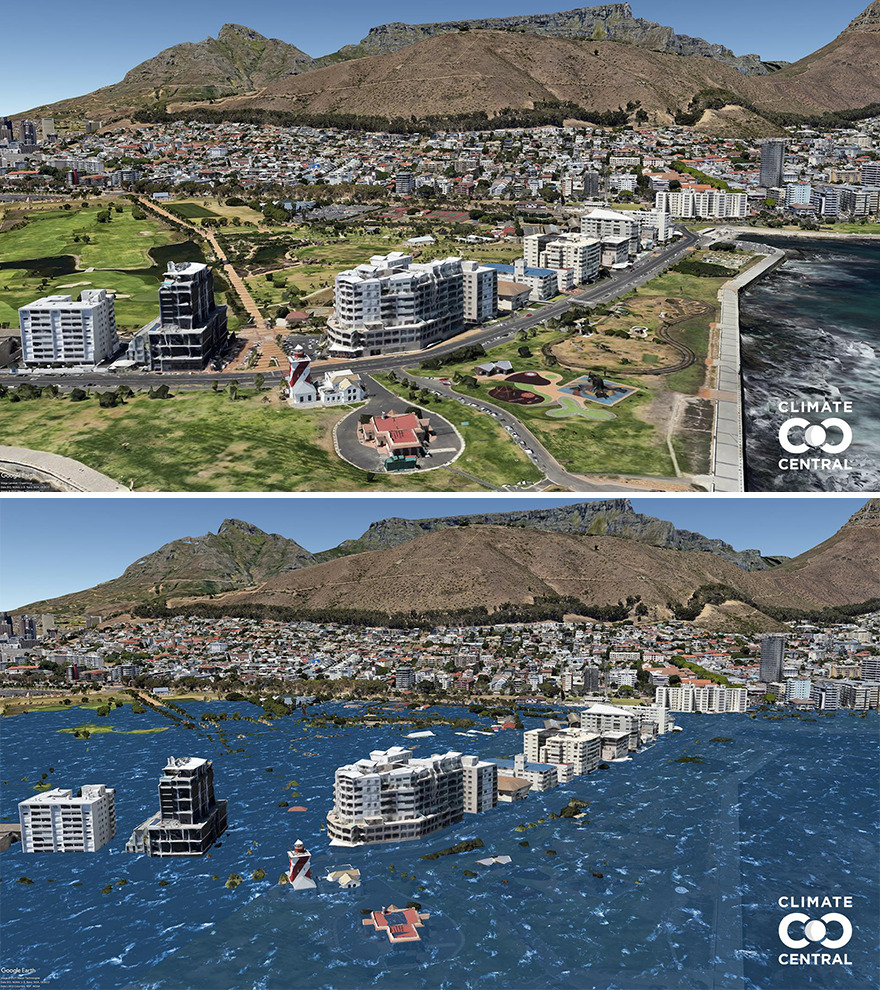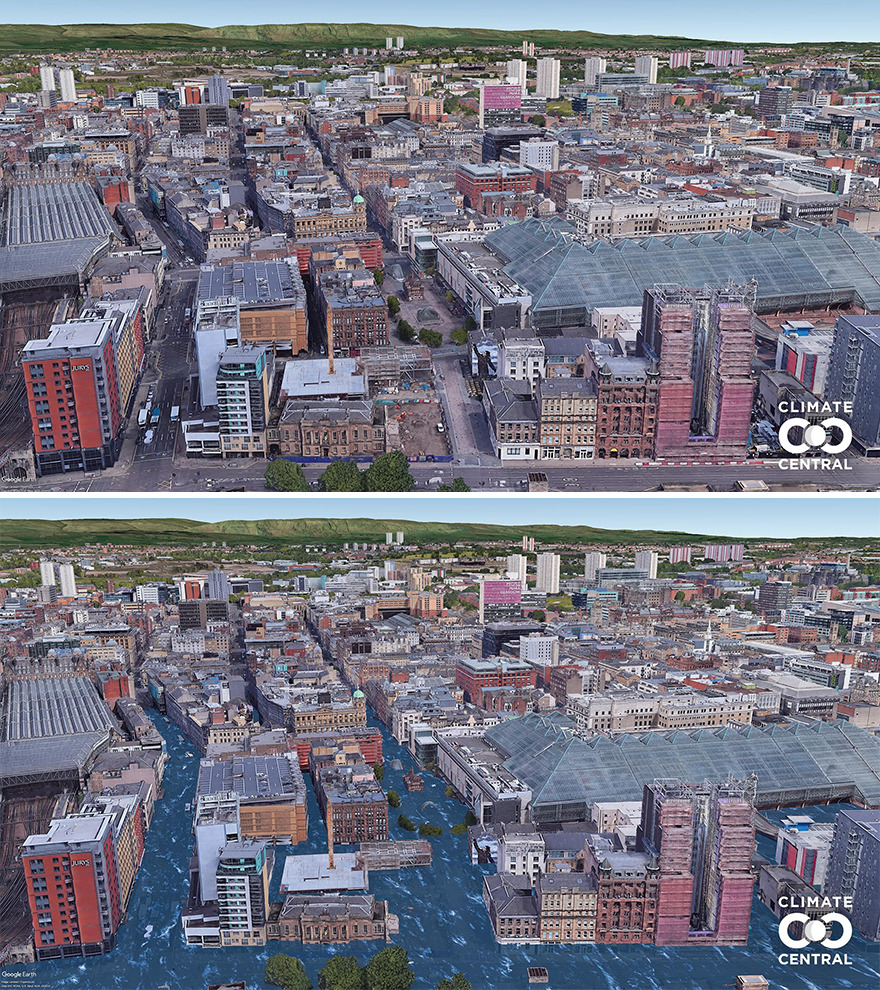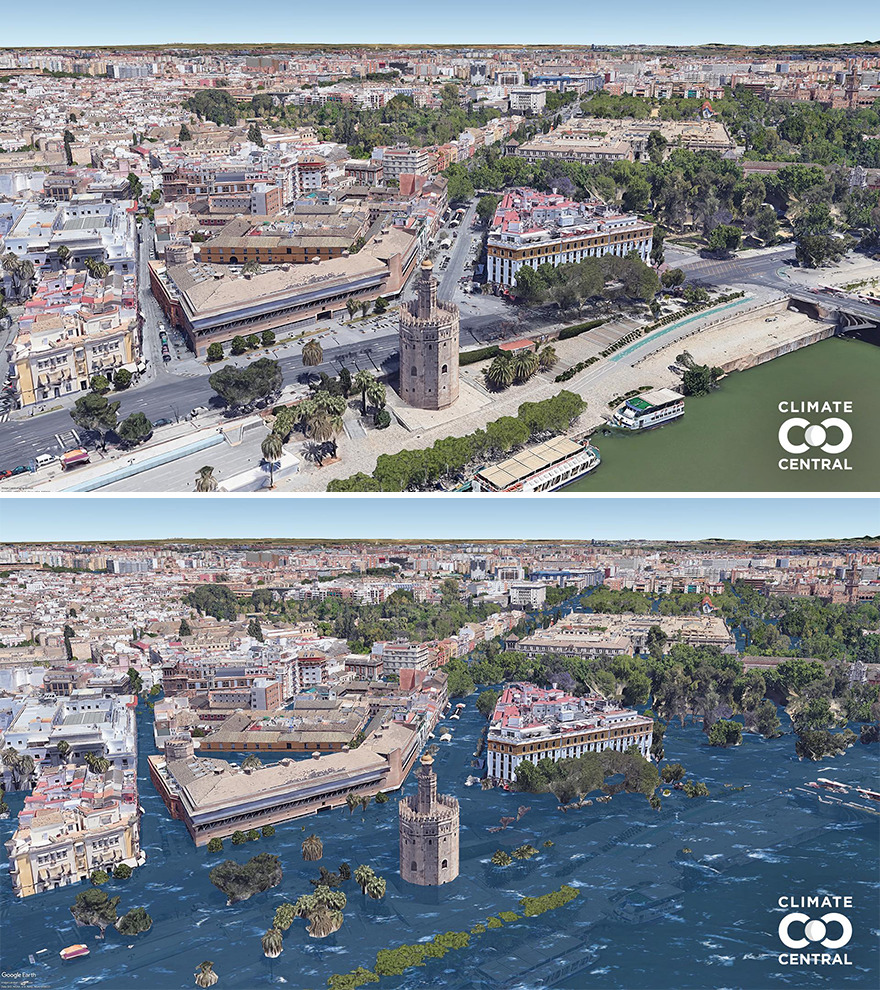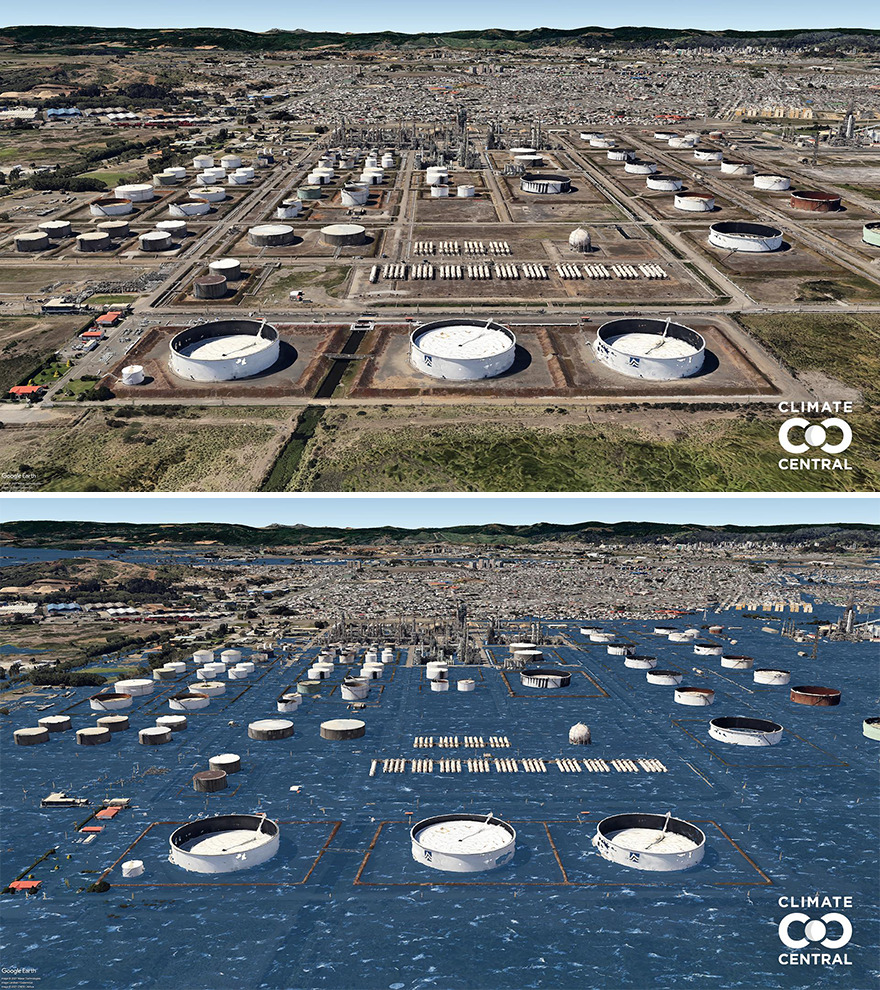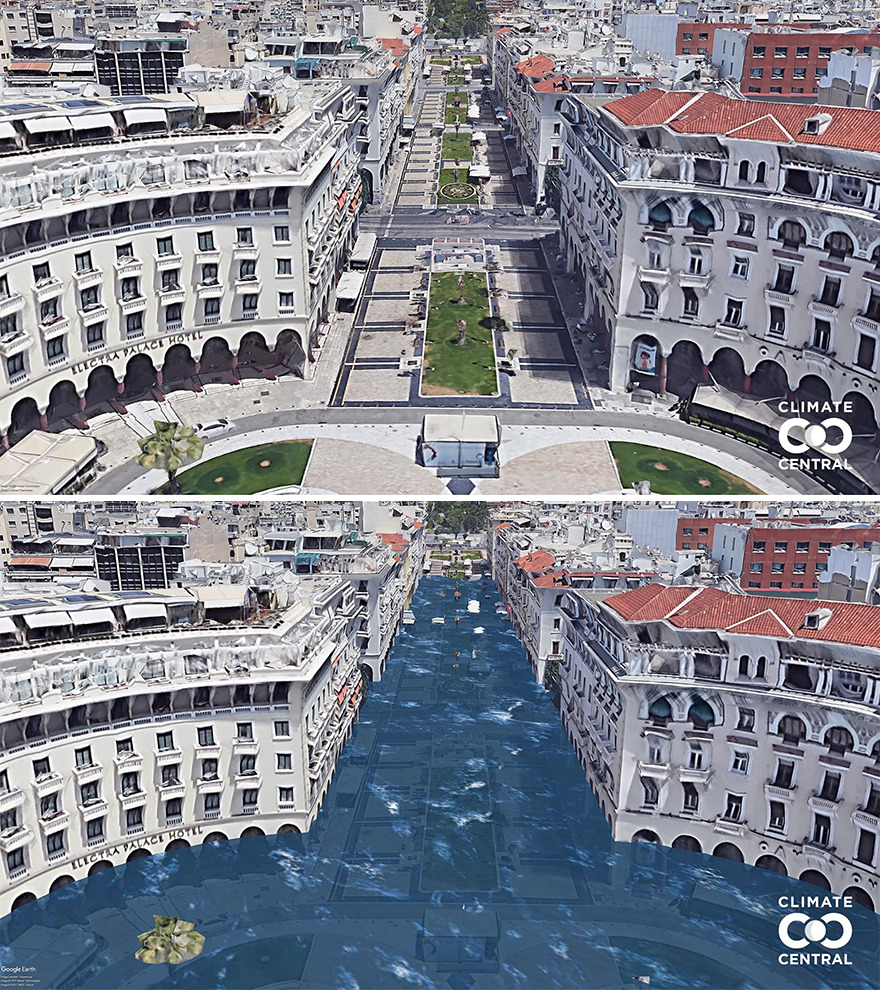We all know it, we all feel it. We are destroying our planet. Slowly but surely, the average global temperature is rising and melting all the ice on our planet, resulting in the water level rising. Soon, the water level will be so high it will cover cities and people’s homes.
That’s what the researchers at Climate Central wanted to show with their project. They took famous places we all know and love and showed how they may look in 2050 if the climate continues to worsen as it has been doing. By 2050, the global temperature will be 3°C higher and many cities near the coasts will be lost underwater. If we don’t do anything, in just 30 years we will have devastating results.
More info: picturing.climatecentral.org | Instagram
This post may include affiliate links.
Lalbagh Fort, Dhaka, Bangladesh
On their website, Climate Central writes: “Climate and energy choices this decade will influence how high sea levels rise for hundreds of years. Which future will we choose?” Their main goal is to research the effects of climate change on our world. If we continue the way we are now, the future will be quite grim.
Plaza De La Catedral, Havana, Cuba
Washington Street, Hoboken, New Jersey, United States
The science research website Iopscience wrote about this issue in more depth: “A portion of human-caused carbon dioxide emissions will stay in the atmosphere for hundreds of years, rising temperatures and sea levels globally. Most nations’ emissions-reduction policies and actions do not seem to reflect this long-term threat, as collectively they point toward widespread permanent inundation of many developed areas. Using state-of-the-art new global elevation and population data, we show here that, under high emissions scenarios leading to 4○C warming and a median projected 8.9 m of global mean sea level rise within a roughly 200- to 2000-year envelope, 50 major cities, mostly in Asia, would need to defend against globally unprecedented levels of exposure, if feasible, or face partial to near-total extent area losses.”
Chhatrapati Shivaji Maharaj Vastu Sangrahalaya, Mumbai, India
Rosenborg Castle, Copenhagen, Denmark
“Nationally, China, India, Indonesia, and Vietnam, global leaders in recent coal plant construction, have the largest contemporary populations occupying land below projected high tide lines, alongside Bangladesh. We employ this population-based metric as a rough index for the potential exposure of the largely immovable built environment embodying cultures and economies as they exist today. Based on median sea-level projections, at least one large nation on every continent but Australia and Antarctica would face exceptionally high exposure: land home to at least one-tenth and up to two-thirds of the current population falling below the tideline. Many small island nations are threatened with near-total loss. The high tide line could encroach above land occupied by as much as 15 percent of the current global population (about one billion people). By contrast, meeting the most ambitious goals of the Paris Climate Agreement will likely reduce exposure by roughly half and may avoid globally unprecedented defense requirements for any coastal megacity exceeding a contemporary population of 10 million.”
Statue Of Liberty National Monument, New York, New York, United States
Temple Of Literature, Hanoi, Vietnam
Climate Center based their project on this research and created the images you see. On their website, you can even see a map of all the risk zones and choose the temperature you want. Then you can check out the country, region, or city you live in and see just how much it would get affected by the rising sea levels.
H.r. Macmillan Space Centre, Vancouver, Canada
Riverside Museum, Glasgow, United Kingdom
Sydney Opera House, Sydney, Australia
Tokyo Tower, Tokyo, Japan
Space Center Houston, Houston, Texas, United States
Queen Square, Bristol, United Kingdom
The Royal Palace, Stockholm, Sweden
Nationals Park, Washington D.c., District Of Columbia, United States
Lloyds Amphitheatre, Bristol, United Kingdom
Tower Of London, London, United Kingdom
El Dorado Park, Long Beach, California, United States
Highway 2, Mayagüez, United States
Lincoln Park, Newark, New Jersey, United States
Downtown San Francisco, San Francisco, California, United States
Lincoln Memorial, Washington D.c., District Of Columbia, United States
Royal Pavilion, Brighton, United Kingdom
California State Capitol Building, Sacramento, California, United States
Place Royale, Quebec City, Canada
King’s College Chapel, Cambridge, United Kingdom
Burj Khalifa, Dubai, United Arab Emirates
Casino Marina Del Sol, Talcahuano, Chile
The Pentagon, Washington D.c., District Of Columbia, United States
Brighton Palace Pier, Brighton, United Kingdom
Magnolia Park, Houston, Texas, United States
The Bell Tower, Perth, Australia
Catedral Basílica De La Inmaculada Concepción, Mazatlán, Mexico
Plaza De España, Seville, Spain
Old North Church, Boston, Massachusetts, United States
Independence Hall, Philadelphia, Pennsylvania, United States
Cathédrale Sainte-Réparate De Nice (Nice Cathedral), Nice, France
Dublin Castle, Dublin, Ireland
Patriots Theater At The Trenton War Memorial, Trenton, New Jersey, United States
Bridge Street, Cambridge, United Kingdom
Airlie Gardens, Wilmington, North Carolina, United States
Newcastle Museum, Newcastle, Australia
Robert F. Kennedy Memorial Stadium, Washington D.c., District Of Columbia, United States
Australian Centre For Contemporary Art, Melbourne, Australia
Cathedral Of Our Lady, Antwerp, Belgium
Blue Train Park, Cape Town, South Africa
Merchant City, Glasgow, United Kingdom
Torre Del Oro, Seville, Spain
Enap Bio Bio Refinery, Hualpén, Chile
Aristotelous Square, Thessaloniki, Greece
Source link : https://www.boredpanda.com/researchers-shows-planet-water-level-rises-picturing-climatecentral

